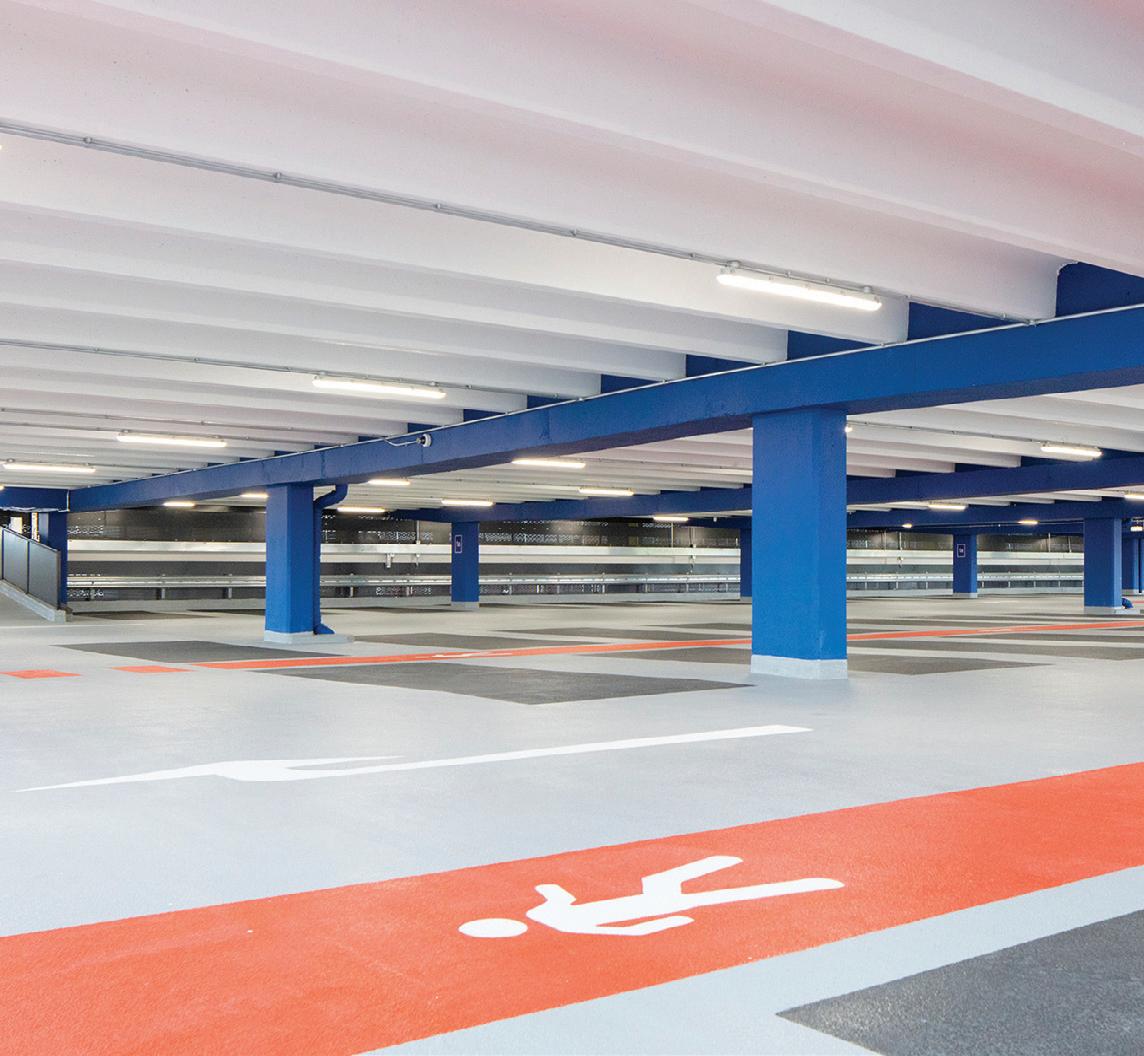









Dramatic transformations are set to take place at Ty Pawb arts centre car park in the Welsh town of Wrexham, the Vyse Street multi-storey in Birmingham’s Jewellery Quarter and the Garibaldi Street surface car park in the East Marsh area of Grimsby. These three car parks in different parts of Britain tell one story: converting grey parking spaces into green places can be good for our physical health, our mental wellbeing and our local communities.
Enabling people to grow, prepare and cook their own food is a key driver behind the creation of community gardens, rooftop orchards and urban farms. These green spaces give people the opportunity to pick, and cook fresh food within a few metres of their homes. And the fruit and vegetables cultivated in their raised beds, potted trees and greenhouses can be sold to local restaurants or given to local people via food banks and other networks.
These reimagined spaces will provide pleasant environments in which people will want to hang out with friends and neighbours, thus tackling isolation and helping build community ties. And they can make commercial sense too. The often underused roof decks of multi-storey car parks offer settings with panoramic views for cafés and bars that can inject life back into struggling town centres. Now that is food, and drink, for thought.
Mark Moran Editor
Turning underused parking bays into green places is good for our health and wellbeingThe Vyse Street Food Project, Birmingham URBAN DESIGN

The Enforcement Summit 2023 will explore latest policy, legislative and operational developments in the field of traffic, parking, air quality and debt recovery regulation.
The event encompasses: local authority enforcement operations; management of parking on private land; and the collection of road traffic, parking and other debts.
Keynote speakers and expert panels will examine themes such as:
n Civil parking enforcement
n Moving traffic enforcement
n Clean air schemes
n Road user charging
n Tackling nuisance vehicles and persistent evaders
n Balancing education and enforcement to encourage compliance
n Intelligence-led enforcement and debt recovery
n The enforcement of anti-social behaviour (littering, fly-tipping, noise issues)
n The role of civil enforcement agents in multi-agency enforcement operations
n Managing appeals and representations
n Engaging with vulnerable debtors

n The role of civil enforcement agents in multi-agency enforcement operations
n Training civil enforcement agents and the back office
n The use of ANPR as an enforcement and detection tool
n The collection, management and use of data
n The regulation of parking and trespass on car parks and private land
The Enforcement Summit 2023 will be attended by:
n Local authority officers
n Parking operators
n Finance managers

n Councillors and stakeholders
n Parking operators and contractors
n IT system suppliers
n Legal service providers
n Personal protection and body-cam suppliers

n ANPR system specialists
n Consultants and academics
n Citizens and debt advisory services
The Enforcement Summit 2023 provides your company with the perfect opportunity to carefully target the marketing of your products and services to those within the smart city planning, active travel, intelligent mobility and parking sectors.

To participate in this sector-defining event contact Jason Conboy. Email: jason@landor.co.uk

EXHIBITORS INCLUDE:
www.enforcementsummit.co.uk

car parks could bolster local authorities’ bottom lines
Serving the mobility hub’s insatiable hunger for energy is a challenge that needs to be met, writes Markus Lauble
Online art star Mr Doodle has painted a 50-foot high mural on the side of a multi-storey car park in Ashford


Green walls have been planted on the façade of the new gateway car park at the Sunderland Riverside development
Slow Food Birmingham plans to convert the roof of a car park in the city’s Jewellery Quarter into an urban farm and orchard
A digital map app system enables local authorities to produce interactive traffic order management information

TechInsight’s global survey reveals parking information is ranked as the most valuable connected car feature by drivers

The latest developments in electric vehicle infrastructure

Visitors are being urged to park considerately when visiting the beautiful Eryri National Park, reports Mark Moran

Preparations are being made to manage traffic and parking problems in the Eryri National Park in North Wales over the coming months. Large numbers of people are expected to visit the scenic mountain region also known as Snowdonia. The park and local authorities say they want to enable people to make the most of Eryri’s stunning scenery in a manageable way, but are prepared to take enforcement action where necessary.
Emyr Williams, Eryri National Park chief executive, said: “We urge visitors to Eryri National Park to plan ahead, make the most of the excellent public transport services in the area and to make responsible parking a priority. With the new car park sensors around Yr Wyddfa and Ogwen, visitors can make informed decisions when choosing where to park, ensuring a safe and enjoyable experience for everyone. Let’s work together to protect the natural beauty of this remarkable landscape for all to enjoy.”
Eryri National Park is working with Cyngor Gwynedd’s (Gwynedd Council) and North Wales Police to urge people to act responsibly when visiting Gwynedd’s communities.


A range of measures have been put in place to reduce the number of people parking on roads and verges in the park. It is hoped that a combination of public transport, double yellow lines and car park sensors which tell drivers when spaces are available should help reduce problem parking. The Traffic Wales website and Parcio Eryri app will help visitors check road conditions and parking availability before they arrive. A park & ride service is being offered from designated car parks at which spaces can be pre-booked.
Bws Ogwen, a community-led electric bus service, will run eight times a day between Bethesda and Ogwen. This service was

launched last summer and complements the existing T10 Bangor to Corwen bus service.
These measures are being supported by a proactive enforcement campaign that will see the removal of illegally parked vehicles.
Cllr Dafydd Meurig, Cyngor Gwynedd’s cabinet member for the environment, said: “Over the last few years, we have seen high numbers of people visiting popular spots here in Gwynedd. We encourage people to plan their visit and activities in advance; to use the appropriate car parks and take advantage of the opportunity to use the available bus services to explore the area.
“For example, the Sherpa bus service runs regularly connecting popular routes around Yr Wyddfa. This will allow people to park their vehicles in the appropriate car parks before enjoying the mountains and other popular local attractions.
“As a council we work closely with North Wales Police and Eryri National Park to monitor parking trends. Staff from all authorities work together to keep the public safe and we ask residents and visitors to bear this in mind when visiting the area and treat them with respect and kindness at all times.

“We ask motorists to respect the parking restrictions and keep the roads clear and safe – in the past there have been instances where cars have parked illegally and which made it very difficult for emergency services vehicles to pass.
“Staff from North Wales Police and Cyngor Gwynedd, who now have powers to tow vehicles away, will pay particular attention to the Eryri area. Our message is for motorists to park sensibly, but if necessary, we will take appropriate action to remove vehicles that park illegally for public safety.”
There is a desire to avoid the problems seen in 2020, when more than 500 cars were parked on one mountain road near Yr Wyddfa on one July weekend. The following summer proactive enforcement saw dangerously parked cars owed away by police and council staff.

This year, enforcement began over the Easter break, with North Wales Police removing obstructive and dangerously parked vehicles from roads in the area. Almost 40 vehicles parked dangerously on the narrow mountain routes were recovered on Good Friday, including 29 near Llyn Ogwen and nine in Pen y Pass.
Police closed the A5 in north Wales after scores of drivers parked illegally on the road. Highway teams took away cars on the road on Friday near the boundary between Gwynedd and Conwy. There were concerns that emergency vehicles would be blocked and, at one point, an ambulance had to be allowed through the congested scene.
Inspector Gareth Pearson from North Wales Police's roads policing unit, said: “Whilst we appreciate that people are getting out and about to enjoy the weather and stunning scenery, we are urging people to be responsible and think about where they park and to make full use of the park & ride facilities that are available.
“We continue to work closely with our colleagues at Cyngor Gwynedd and the National Park to help reduce the risk to walkers, cyclists and other road users.
“The irresponsible and dangerous parking we have previously witnessed in some areas not only risks lives but also prevents emergency vehicle access. Anybody found to be parked on the clearway or causing an obstruction will have their vehicle removed at their own expense. Please heed the warning.”
Plans to give Welsh councils powers to fine pavement parkers have been delayed. It follows complaints from Welsh councils that ministers are asking them to implement too many new transport policies at the same time. The Welsh Government had planned to consult on, and then introduce, the new law by the end of this year, but a consultation will not now start until 2024.
In January, deputy minister for climate change Lee Waters said that the devolved administration would bring in legislation to allow the existing offence of obstruction to be used. Waters said Wales had given up on the “frustratingly slow” process of waiting for Westminster to change the law. The Department for Transport has not progressed the issue since its consultation on pavement parking closed in autumn 2020.
Last month the Welsh Local Government Association (WLGA) wrote to the Welsh Government about transport policy. The letter stated: “There is a long list of transport-related projects and requirements, all of which are being taken forward simultaneously. The proposal on pavement parking enforcement is just the most recent example. This is placing councils’ highways and transport staff under great pressure with much of it being on top of the ‘day job’, such as maintaining highways and structures, and keeping daily bus services running smoothly.”
The letter also raised concerns about a roads review which scrapped all major road projects and plans to end COVID-era bus support.
The original plan would have seen the new pavement parking law introduced the same year as a default 20mph speed limit in urban areas across Wales. In a statement to the Senedd earlier this year, Waters said: “I propose to consult widely with a view to introducing the necessary legislation by the end of 2023.”


However, in a new statement Waters states: “I recognise that we are asking a lot of hard-pressed local authorities at what continues to be a difficult time. I have listened to the feedback from leaders and decided to delay the consultation on pavement parking until next year. This will enable local authorities to focus on the implementation and introduction of default 20mph speed limits in September 2023 and the work to prepare for bus franchising.
“This is an incredibly busy period for local government. Councils across Wales continue to deliver vitally important services, which people rely on every day and we continue to support them to do so. We have worked closely with, and supported local authorities, through the tough times of austerity, through floods, through the pandemic, and through the cost-of-living crisis.”
Responding to the delay, Joshua James, public affairs manager of Living Streets Cymru, said: “Pavement parking is dangerous and stops many people from leaving the house and enjoying the benefits of walking. While it’s frustrating to see this delay to enforcement, it’s important that Welsh Government and local authorities can work together to make sure that measures to tackle pavement parking are as effective as possible.”
Dorset’s Police and Crime Commissioner and the county’s council leaders are calling for tougher sanctions to tackle the increasing issue of illegal parking in Dorset through the summer months.
Currently, parking fines are limited to no more than £100, with local authorities setting the fine amount based on statutory guidance from the government.
The letter signed by PCC David Sidwick, Spencer Flower, leader of Dorset Council, and Philip Broadhead, leader Bournemouth, Christchurch and Poole (BCP) Council.
The leaders call for a commitment to increasing the limit to a base figure of at least £150, with a discount to £100. if paid early. They argue the increase would ensure that the fines are effective in acting as a deterrent to illegal parking.
The letter states that current fines, which vary from £50 to £70 which is halved if paid within 14 days, are simply too low to deter anti-social parking and keep road traffic flowing freely.
For the past two years the PCC and councils have asked for an increase the base level of fine to a more significant level, but no action appears to have been taken on this at all.
Their call for action comes as Dorset prepares for yet another
busy summer period as residents and tourists head to beauty spots to make the most of pleasant weather.
The issue of problem parking was exacerbated during the pandemic and at the height of the first lockdown when the beaches were open but not the restaurants and supporting hospitality infrastructure. Dorset found itself facing anti-social parking on an extreme level, which caused severe congestion and interfered with the normal running of the seaside and tourist resorts.
Since then, every time there is a spell of pleasant weather Dorset’s resorts are overcrowded with anti-social parking which is simply not deterred by the low level of penalty charge that is currently in place.
The PCC and councils argue that, in practice, many people now decide to take the penalty of a fine for parking on a double yellow line because a £35 fine is not much more than the cost to park for the day in a regulated car park and the locations are often more convenient for the beach or beauty spot.
Dorset Police and Crime Commissioner David Sidwick said: “Once again, we find ourselves entering a summer period when Dorset’s population triples and many visit our beaches and beauty spots. We’ve seen in past years that the current fines are not enough to deter the antisocial and illegal parking that increases congestion and, in some cases, poses a risk to people’s lives. I will continue to lobby government for tougher
The concerns expressed by the Dorset Police and Crime Commissioner and council leaders are shared by residents, public authorities and private landowners all over the country and are not restricted to tourist hotspots. The International Parking Community has been in regular contact with MPs to highlight the serious issues arising from the continuing increase in antisocial parking and how the government’s previous proposals would have simply incentivised such behaviour and exacerbated the problem.
We share the commissioner’s view that the level of deterrent must be at a level to deter such irresponsible and selfish
behaviour in towns, cities and beauty spots all over the UK.
Clearly, the current deterrent is not having the desired effect and the
consequences for such irresponsible and selfish behaviour.”
In June last year, illegal parking became such a problem across the water in Studland that it interfered with Firefighters’ ability to deal with the large heath fire and Dorset Police were called to help deal with the vehicles.
BCP Council leader Cllr Philip Broadhead said: “As one of the premier tourist destinations in the UK, each summer we welcome thousands of visitors to our beaches and open spaces. We’ve ample parking to accommodate them, but too many decide to ignore good practice and clog our up roads with illegal parking on double yellow lines.”
“Our seasonal response efforts over the last few years has made a real impact on this, but we remain hampered by the inadequacy of the government mandated limit on fines for these offences. A change in this legislation to reflect the flexibility that London has would make a critical difference to ensuring that we can enforce considerate parking.”
The issue affects many of Dorset’s tourist attractions particularly the numerous seaside resorts. Dorset Council leader Cllr Spencer Flower added: “I fully support this call for tougher parking fines. Illegal parking at Dorset beauty spots causes major risk to public safety, as well as inconvenience and frustration for local residents. I implore the Secretary of State to heed our call.”
continuing rise in the number of repeat offenders is a very real cause for concern as they now account for a third of all parking charges issued each year.

Indeed, 8% of vehicles now account for 30% of all PCNs issued. This demonstrates that some drivers are prepared to accept the cost of a PCN for a convenient but illegal place to park their car as there is little difference to the cost of a day’s parking. That’s hardly a deterrent!
Local residents, businesses and other responsible road users will know all too well how disruptive, annoying and dangerous such irresponsible and inconsiderate behaviour can be. Such a cavalier approach to rules and regulations and a total disregard for others is simply not acceptable. Fairness, safety and responsibility must prevail.
Will Hurley is chief executive of the International Parking Community


The UK government has launched a digital map of the entire network of underground power cables, gas pipes, sewers and water mains beneath our feet. The interactive map has been tested in the North East of England and will be rolled out throughout England, Wales and Northern Ireland by 2025.
The National Underground Asset Register (NUAR) was created by the Geospatial Commission, which is part of the Department for Science, Innovation and Technology.
The first phase of NUAR contains data from the public and private sector organisations who own pipes and cables in North East England, Wales and London. This includes all of the major energy and water providers, such as Northumbrian Water, Wales and West Utilities, Southern Electric Power Distribution and
National Grid, as well as smaller service providers, telecommunications companies, transport organisations and local authorities.
Also known as the ‘minimum viable product’ (MVP), the first phase is available to eligible organisations in North East England, Wales and London. It is intended to complement current business practices initially and will allow users to both

plan for future adoption and provide feedback to enhance the service.
Dr Steve Unger, independent commissioner, Geospatial Commission, said: “This first release of NUAR is a major milestone in a programme that will benefit everyone. By using the power of location data to plan and deliver street-works more effectively, it will improve the efficiency with which we
supply essential services and it will minimise the disruption experienced by other road users.
“Many different asset types are buried beneath our feet, owned by many different organisations, large and small. We are delighted by the number of asset owners that have recognized the value of working with us, to make the data that they hold more accessible. And this release is just the start!”
A high court order banning street cruising in the West Midlands will stay in force until trial on 15 May 2023 after a review of the order was heard at the Birmingham High Court .

On 13 February the court granted applications by Birmingham City Council and one led by Wolverhampton City Council on behalf of local authorities in the Black Country. The Black Country area includes all of the Boroughs of Wolverhampton, Dudley, Sandwell and Walsall.
The interim injunction forbids anyone who is a driver, rider or passenger in or on a motor vehicle to participate between the hours of 3pm and 7am in a gathering of two or more persons at which some of those present engage in motor racing or motor stunts or other dangerous or obstructive driving. For the purposes of the injunctions, stunts are defined as driving manoeuvres often undertaken at such gatherings including but not limited to:
• “Burnouts”: Causing a vehicle to destroy its tyres by applying power to the drive wheels while braking so as to remain in place while the wheels revolve at speed
• “Donuts/Donutting”: Causing a vehicle to rotate around a fixed point (normally the front axle)


while not moving-off causing noise, smoke and tyre marks to be created
• “Drifting”: Turning by placing the vehicle in a skid so that most sideways motion is due to the skid not any significant steering input
• “Undertaking”: Passing a vehicle on its nearside so as to overtake in circumstances not permitted by the Highway Code.
The injunctions have a Power of Arrest attached to it which gives the police the power to detain anyone who breaches it. Breach of an injunction is a contempt to court and, if proved, the court has the power to impose a sentence of imprisonment, fine, or an order seizing a person’s assets.
Cllr
John Cotton, Birmingham’sAn injunction banning car cruise events in a town where 17 spectators were injured in a collision has been extended for five more years.
Stevenage Borough Council was first granted an injunction in 2019 after the crash on Monkswood Way in July.
The new injunction to ban car cruising in Stevenage has been granted for a further five years, coming into force on Monday 6 February.
Stevenage Borough Council and Herts Police attended Luton County Court on Wednesday after an application to continue to stop car cruising and the associate nuisance in the borough.
The injunction, which has a power of arrest attached, was granted for a period of five years, until 2028.
The following activities are subject to restrictions in the district of Stevenage:
• Drive at excessive speed, or otherwise dangerously
cabinet member for social Justice, community safety and equalities, said: “Street cruising is dangerous as well as being a nuisance for law-abiding citizens. By working with our partners at the police
on applying for this injunction, we have shown we understand and share the continued concerns raised by many residents, about this antisocial and life-threatening behaviour.
“Past court action shows that we won’t hesitate to ensure justice is served upon offenders, who have no excuse for their actions. There are plenty of lawful ways to exhibit and demonstrate their vehicles – but our roads are not the place for it.”
Although the application for this order has been made by Birmingham City Council’s Community Safety Team, officers from West Midlands Police will be responsible for its enforcement.
Chief Superintendent Ian Green from West Midlands Police, said: “We have been working jointly with all local authorities over the past few years and are determined to tackle dangerous and reckless driving which puts the safety of others and themselves at risk.
“Alongside our partners we do not tolerate illegal car gatherings due to the danger and nuisance they create to communities and the wider public going about their lives. We have officers dedicated to addressing the issue from both neighbourhood teams and specialist traffic resources, who are also working with the insurance industry and providing diversionary and educational courses.”
• Driving in convoy
• Racing against other motor vehicles
• Performing stunts in or on motor vehicles
• Sounding horns or playing radios
• Dropping litter
• Supplying or using illegal drugs
• Urinating in public
• Shouting or abusing, threatening, or otherwise intimidating another person
• Obstruction of any other road user.
Leader of the council, Cllr Richard Henry, said: “We’re pleased that the injunction to ban car cruising will be granted for a further five years, protecting our residents from this dangerous and highly disruptive behaviour.
“We have worked with our partner organisations including Stevenage Police to make this happen and we thank them for their support. The court’s decision means that the problem can continue to be controlled over the long-term, and that participating, organising and promoting car cruising will continue to be prohibited in Stevenage going forward.”
In 2021 Dominic Brown, from St Albans, and Julian Castano Perez, from Dunmow in Essex, were jailed following the crash on 18 July 2019. Both pleaded guilty to eight charges of causing serious injury by dangerous driving and 11 of causing bodily harm by wanton and furious driving. Sentencing the pair, Judge Michael Kay said they had shown an “idiotic desire to show off”. The judge said car cruise events should be banned to avoid more “scenes of carnage” as there was a risk “people will die and be injured”.
Responding to the new injunction, Chief Inspector for Stevenage Graeme Walsingham said: “We have been working in partnership with Stevenage Borough Council to make sure we do not see a repeat of the horrific collision that occurred after that cruise event in 2019.
“As a result of the injunction extension, we continue to have powers to prevent the kind of activity that caused the incident, and we will take swift action against those that ignore this legislation. My officers will continue to patrol hot spot locations and deal robustly with those people who flout these new rules.”

WPS is a leading solution provider of pay on foot systems and we have teamed up with industry payment providers to give motorists the same experience in paying for parking on-street in the off-street environment.
Digital payments, pre-booking and permit systems are ready to go using our partners JustPark, ZatPark and now with the addition of RingGo, or using our own payment app, WPS Pay.
You can be confident when investing in WPS that you are providing your customers with the widest choice of payment options coupled with an industry-leading redesigned user interface.


WPS are also proud to be leading the way with confirmed integration into the new National Parking Platform (NPP). Build your parking operation on the WPS Parking Platform and our ever-growing Marketplace of integrated solutions.

info@wps-uk.com

Sustainable transport campaign group Campaign for Better Transport visited Nottingham to see how the country’s only workplace parking levy (WPL) has changed how people travel around the city.
The campaign, which is celebrating its 50th anniversary this year, was among the organisations that helped pave the way for the launch the WPL.
Since its introduction in 2012, the WPL has directly raised over £90m and helped to lever in more than £1bn of inward investment in sustainable transport for the Nottingham.
An impact report shows how in its first ten years the WPL has played a part in constraining congestion growth by 47%, saving the city £15m per year, and contributed towards improved air quality and Nottingham’s ambition to become the first carbon neutral UK city by 2028.
The WPL has directly or indirectly contributed towards:


A £60m redevelopment of Nottingham Station incorporating trams, trains, buses, taxis and e-scooters
The £570m investment in the Nottingham Express Transit tram network to extend south
and west to Clifton and Beeston
An investment of £120m in low and zero-emission buses
Lowering carbon emissions by 58% since 2005 and improving air quality, meaning Nottingham has avoided a government-imposed clean air zone while cities like Birmingham, Bath and Sheffield have had to start charging drivers.
Michael Solomon Williams, campaigns, said: “We were delighted to visit Nottingham, which is setting an example for integrated local transport of which it should be very proud.


“Having advised the council team on implementation of the workplace parking levy, it is fantastic to see that this progressive approach to public transport funding has proven to be such an outstanding success, enabling
An east London borough has written off more than £7.2m in parking debt.
Civil enforcement agents working for Newham Council have been unable to trace persistent evaders and drivers no longer living at their addresses, a meeting of the council’s cabinet was told.
The uncollected debt has built up over several years. The council previously wrote off a total of £55.64m in parking debt between 2014-15 and 2021-22.
Deputy mayor James Asser said: “Over two years we have written off various sums. It had built up over a large number of years. It was structured in a way that existing debt was irrecoverable and was not just kept up in the books.”
Cllr Asser is also the cabinet
member for environment and sustainable transport. He said the Labour-run council started writing off parking debt as part of a plan to improve how it manages the fines.

During the meeting, an officer told cabinet members that one of the biggest problems with irrecoverable parking debts were due to the people no longer living at their given address and others who cannot be traced.
funds to be directed straight back into public transport provision.
“It is significant that businesses are now flocking to Nottingham because of the transport network, and this should give the Treasury pause for
thought. Nottingham can also boast contactless multimodal ticketing, the only hospital in the country with its own tram stop, transformative plans for the city centre with the Broad Marsh development connecting to trains and trams at the station, and award-winning bus drivers.
“We were delighted to meet National Bus Driver of the Year, Jonathan Smallman, an example to all aspiring bus drivers and a superb representative of a truly trail-blazing city.”
Cllr Audra Wynter, Nottingham’s portfolio holder for highways, transport and parks, Councillor Audra Wynter, said: “Nottingham is a worldrenowned leader in excellent public transport – a city where it’s easy to get around in a green, affordable and sustainable way.”
Strike action by civil enforcement officers (CEOs) in Hounslow has ended after a £4,000 pay rise was agreed.
Pay for patrol officers working for Serco in the west London borough will rise from £24,420.50 to £28,730 by November 2023.
The deal struck came after Unite escalated long running strike action.
The workers took two weeks of strike action in January and a further month of strike action from Monday 6 February until 5 March. This was followed by indefinite strike action.
Hounslow’s CEO workforce has now voted to accept the 18 month pay deal worth almost 18%.
Unite general secretary Sharon Graham said: “This is a
cracking pay deal for the parking officers in Hounslow. The workers’ rock solid determination has paid off. It’s more proof that Unite is fighting for better jobs, pay and conditions and winning.”
Unite negotiated an additional 8% backdated to April 2022 (on top of 1.7% already awarded). Followed by a further 7% uplift from April 2023 and a further minimum 2% uplift from October 2023.
Unite acting national officer Clare Keogh said: “The workers were not prepared to give up. Their determination has paid off. For our part, Unite was ready and willing to thrash out a deal from the very start. It’s a shame Serco took so long to reach a deal. This is a lesson to other outsourced employers up and down the country.”

Q-Park will be providing parking for cruise passengers in Liverpool whilst they are on holiday. The parking operator has reached an agreement with CPS, the operator of the Liverpool Cruise Terminal.
Long distance commercial passenger ships have operated from Liverpool as far back 1819 and this is part of the city’s rich nautical heritage. The Cruise Terminal was opened in 2007 after significant investment and now welcomes nearly 60 ships a year and over 100,000 passengers and crew.

Liverpool Cruise Terminal differs from others due to its city centre location, at other cruise departure points, such as Southampton, there was parking
available to passengers onsite. With the terminal being in the heart of the city centre this was therefore not available, so CPS had to source parking from a third-party car park.
CPS approached Q-Park as it was looking for a more seamless experience for their passengers based on feedback garnered
through customer surveys.
When customers book their cruise, they are now able to book their parking at Q-Park through the cruise operator. When booking they enter their number plate and make payment.
Upon arrival the customers
Number Plates are read by the camera and the barrier opens
automatically. They are then directed via clear signage to park in the cruise parking area.
Once parked, the Cruise Terminal team greet the customers with luggage vans and passenger minibuses to take them directly from inside the car park to the Terminal to check in.
On return customers are transported back to their vehicle where they exit the parking facility via their number plate to allow them to start their journey home.
John Denton, head of commercial at Q-Park, said: “We are delighted to be able to welcome cruise passengers in Liverpool into our safe and secure facilities. We fully understand that travelling both to and from your holiday can be a stressful time, we believe our seamless operation can delight customers on both their departure and return.”
Fourteen car parks operated by Malvern Hills District Council in Worcestershire have attained Park Mark status under the Safer Parking Scheme.

Cllr Peter Whatley, portfolio holder for resources, said: “We are delighted to have been awarded the Park Mark Award. We strive to provide a safe and clean environment for residents and visitors to park their cars.
District Council has achieved the Park Mark award for these 14 car parks, demonstrating its hard work and commitment to providing a safe environment for users.”
Jackie Godfrey-Hunt
A shopping centre car park in Derby is closing because falling usage and the uneconomic cost of refurbishment.
The Riverside multi-storey in The Cock Pitt will no longer be accessible to drivers from 26 April.
The 832-space car park is located near the city’s bus station and had been popular with Derby County football supporters on matchdays.
However, shopping centre operator Derbion said: “Over the past few years, the Riverside car park has been used less frequently by our customers.
“The building also requires significant investment, challenging its financial



viability. We will continue to offer a substantial number of parking spaces for customers across our three remaining car parks.”
Derbion said the Centre, Basement and Bradshaw Way car parks provide over 2,700 spaces. It stated: “Over the past two years we have continued to invest in our car parking offer to bring additional benefits to customers, including the introduction of our cashless and ticketless parking system, offering a smooth customer journey with the ability to pay online, at the barrier or at pay machines, and additional electric vehicle charging points.”
“It is testament to our civil enforcement officers, property and cleansing teams who work hard to ensure standards are maintained. The award is a well-deserved recognition of our ongoing commitment to keeping people safe.”
Matthew Robinson, British Parking Association area manager said: “Malvern Hills
Designing Out Crime officer at West Mercia Police, said: “It has been a pleasure working with Malvern Hills District Council to award Park Mark accreditation for these car parks. Park Mark accreditation clearly demonstrates these sites are effectively managed, maintained, and have been properly assessed for crime reduction. This scheme is a fine example of partnership working between West Mercia Police and the local council which will reduce the fear of crime for all users.”
















Westminster tries engagement alongside enforcement actions
Westminster City Council ongoing enforcement campaign against antisocial behaviour by pedicabshas seen a number of successful court prosecutions.
The council is now placing a focus on educating riders as well as preventing noise nuisance.
City inspectors joined Metropolitan Police officers on enforcement patrolling known hotspots in Soho, the West End, Mayfair, and outside Selfridges on Oxford Street.
The patrols found that those playing overly loud music are now a small minority. But prosecution against four riders will be pursued after operators were found blasting out a variety of pop, house and rock music.
As part of the new strategy, Westminster’s city inspectors handed out leaflets to pedicab operators warning if they play create excessive noise after 9pm they will be prosecuted. The leaflet also underlined the consequences if caught.
Police officers shared information about the new Community Protection Notice used under the Metropolitan Police Act 1839. This aims to combat nuisances by persons
on roads, pavements, and side streets. With these additional powers, it is hoped that pedicab riders begin to be more considerate to residents and visitors who want to enjoy Westminster’s night-time economy lawfully.
Prosecutions are taking place where breaches are deemed serious. Eight pedicab riders were required to appear at City of London Magistrates Court on 15 March.
A total of £4,792 in fines, costs, and victim surcharges were handed down to riders under the Control of Pollution Act 1974. These offences were from enforcement operations that took place last year.
Westminster’s deputy leader and cabinet member for public protection and licensing, Cllr Aicha Less said: “It is fantastic to hear that last year’s progress made by our council officers has continued and I hope fines like those handed down continue. Despite our hard work, the lack of central government support is just not good enough.
“It leaves us tackling pedicabs with one hand tied behind our back. They need to give Transport for London more licensing powers. We will continue to do everything we can to stop rogue riders ruining the lives of residents and spoiling Westminster for our visitors.”
Liverpool Magistrates Court on 28 February.
Brennan was convicted of a recent theft from a parking meter in William Brown Street. The order stipulates that Brennan cannot touch or interfere with any parking meter anywhere in Liverpool for two years.
Westminster City Council has welcomed new measures to prevent irresponsible parking by dockless bike users. Following discussions with the council, bike rental operator Lime has announced it will increase the initial fines for improper parking from £2 to £10 in Soho and Covent Garden.

The council has also agreed new geofencing locations with the operator which will prevent bikes from being parked in certain streets. If users attempt to park their bikes in these no-parking zones they will continue to be charged by the app until the bike has been moved.
The new measures have come into force this week in areas such as Soho Square, Cambridge Circus, and Old Compton Street. The council has also called for apps to be improved so residents and businesses can report badly parked bikes more easily. Discussions between the council and dockless bike companies about creating designated parking bays are ongoing.
Cllr Paul Dimoldenberg, cabinet member for city management, said: “These new measures are a step in the right direction to ensure the West End is accessible for everyone. Residents have told us they are sick and tired of badly parked dockless bikes blocking narrow pavements and roads.”
Nicholas Brennan
A Liverpool man has been banned from touching parking machines for two year.
The Criminal Behaviour Order (CBO) prohibits him from touching any parking meters in Liverpool after being convicted of theft.
Nicholas Brennan, 53, of Fenwick Street in Liverpool city centre was given the order at

Community policing Sergeant Charles Cottier said: “Offences against parking meters carry an enormous burden to the taxpayer which is unacceptable. For Liverpool City Council alone it is estimated to cost more than £100,000 per annum to repair damage to these machines.
“Your Local Policing team has recognised this, and the CBO granted today against Brennan reflects his disregard for others. Should he breach the order then he could be imprisoned.”
Verge parking in the East Riding
Drivers are damaging grass verges when parking in and around villages in East Yorkshire.

The council has agreed to motion Cllr Viv Padden raised calling for ways to tackle the problem to be scrutinised by East Riding of Yorkshire Council.
The Lib Dem councillor highlighted how verge parking affects places such as
Fridaythorpe, North Dalton, Anlaby and Hessle.
Cllr Richard Meredith, chair of the environment and regeneration sub-committee, which looks at highways issues, said solutions needed to come through a creative use of existing measures because of how little the council could do to stop it outright.
The issue is expected to be discussed by the committee.

London’s ultra low emission zone (ULEZ) scheme is encouraging the vast majority of drivers to switch from older, more polluting vehicles, new data from Transport for London (TfL) suggests. The findings suggest that the ULEZ charge will not apply to 90% of vehicles when the zone expands to cover all London boroughs on 29 August 2023. The zone currently goes out as far as, but not including, the north and south circular roads.
In November 2021, TfL estimated car compliance at 85%, up from around 75% estimated from earlier analysis of cars seen in June 2020. TfL is advising people to use its vehicle checker tool to see if they will be affected.
The London-wide ULEZ is vital in tackling the triple threats of air pollution, the climate emergency and congestion, and will ensure five million more people can breathe cleaner air, said TfL. It estimates that around 4,000 Londoners die prematurely each year as a result of toxic pollution and can lead to stunted lungs in children and a higher risk of dementia in older people.
The ULEZ has helped to reduce nitrogen dioxide (NO2) levels by 46% in central London and 21% in inner London,
there is more to do to ensure every Londoner can breathe cleaner air. For drivers of the very few non-compliant vehicles, “I have launched the biggest scrappage scheme ever – £110m – to help families on lower incomes, small businesses, charities, sole traders and disabled Londoners replace their vehicle with a less polluting one or move to a cleaner, more active mode of transport.”
according to TfL. It forecasts that the ‘ULEX’ expansion will reduce nitrogen oxides (NOx) emissions from cars in outer London by 10%, and reducing PM2.5 car exhaust emissions in outer London by nearly 16%.
Alongside the ULEX expansion, London Mayor Sadiq Khan has launched a scrappage scheme worth £110m. This, he said, will support smaller businesses, sole traders, charities, Londoners on lower incomes and disabled Londoners to replace their older, more polluting vehicles with greener alternatives. The mayor and TfL have also decided to extend the grace period for people on certain disability benefits and those with wheelchair accessible vehicles until October 2027. The decision
A woman has used an artificial intelligence (AI) chatbot to successfully appealed against a £60 parking penalty charge notice. When Millie Houlton received the PCN she said she was tempted to pay rather than spend time composing a letter. However, she asked ChatGPT AI system: “Please help me write a letter to the council, they gave me a parking ticket.”
Chatbots such as OpenAI’s ChatGPT are designed to answer questions by finding information and presenting it in a human-like manner.
The 22-year-old York St John University said the PCN had been incorrectly issued for parking on her street as she has a permit to do so.
She told the BBC: “I was like, ‘Oh I don’t need this fine, I’m a
student’, but trying to articulate what I wanted to say was pretty difficult so I thought I’ll just see if ChatGPT can do it for me. I put in all my details about where and when it happened, why it was wrong and my reference for the fine and it came back with this perfectly formed personalised response within minutes. It said I was a student and that I had paid for my permit for two years and I wasn’t going to deliberately park somewhere I shouldn’t.”
Houlton sent the letter that the chatbot generated and the PCN was withdrawn. She said although she had been using the OpenAI system for a while, she had begun to use it for social occasions, such as organising an Easter egg hunt for her running club.
was also made to widen the criteria to include people on a wider range of disability benefits, or whose vehicle adaptations makes them more difficult to change. This includes nominated drivers and people living outside of London.
Sadiq Khan said: “I have always been clear with Londoners that the aim of the ULEZ is to get the most polluting vehicles off our roads in order to protect both the health of Londoners and our environment. This new data shows people, businesses and charities understand the impact of air pollution on health and are preparing for the change. We expect the number of compliant vehicles to go up even more as people prepare for the expansion, but we know
Jemima Hartshorn, founder and director of the campaign group Mums for Lungs, said: “London’s toxic air is harming children’s health, stunting their lung growth and causing asthma. It is brilliant that those who own the most polluting vehicles driving throughout Outer London are already cleaning up their act to be ready for the ULEZ expansion.”
Silviya Barrett, director of policy and research at the Campaign from Better Transport, said: “It’s vital that we act to clean up our polluting air, so it’s really encouraging to see that so many people are already making the switch to less polluting vehicles. We welcome the mayor’s investment in buses and the scrappage scheme which will support lowincome households transition to greener transport. We hope that lots of people will take up the scheme’s offer of an annual bus or tram pass and experience the benefits of public transport.”
A driver who was fined after driving through Gatwick Airport’s drop-off zone has challenged the charge notice using an artificial intelligence (AI) chatbot. Shaun Bosley, from Brighton, received a £100 charge from NCP after dropping a work colleague at the airport in November.
He turned Open AI’s ChatGPT to generate a humanlike appeal that stated he had had no previous notice of the fine, which was issued by NCP.
Motorists dropping passengers at Gatwick have to pay £5 for a maximum of 10 minutes. They are charged an additional £1 for every minute they stay after that up to a maximum of 20 minutes.
Bosley credits the chatbot with convincing NCP to reduce the fine to £15, which was the
original amount.
ChatGPT users type a request into a chat box and the system generates a response. Bosley said: “I just typed, ‘Write an appeal to a penalty charge notice for driving through Gatwick Airport’. I have received final notice, but never received first notice of the penalty’, and straight away it came back with a great response.”
ChatGPT helped Bosley write a letter that read: “I understand that it is my responsibility as a driver to be aware of the rules and regulations regarding driving through an airport. However, I never received the first notice of the penalty and therefore, did not have the opportunity to contest the charge or pay the fine in a timely manner.”

Cars are being stripped of parts while parked in Birmingham city centre. A number of motorists have reported the theft of major elements of their vehicles after a woman’s car was targeted while she attended a concert in Digbeth.
Police say so-called ‘car cannibalism’ is on the increase amid a growing shortage of car parts.
The BBC has learned of nine similar incidents in the Digbeth area during January.
West Midlands Police said an 18-year-old man had been arrested on suspicion of theft in January, but bailed with conditions while inquires continue.
A spokesperson for the force said: “We’ve stepped up patrols around car parks in Digbeth after a number of vehicles have been stripped of parts. We received nine reports during January and we know the inconvenience and frustration this causes for car owners.”
The spokesperson said officers were also working with cadets to offer crime prevention advice.
In December, West Midlands Police said officers had arrested more than 100 suspected car criminals within three months in a crackdown on vehicle crime.
A specialist vehicle crime task-

force was set up in September, involving officers with local knowledge.
Work has included operations to close down so-called chop shops, which act as a market for car thieves.
In autumn last year, the National Police Chiefs’ Council (NPCC) said it was aware of a number of car part thefts in the West Midlands and Scotland.
The NPCC it was not something forces were seeing as a significant emerging trend nationally, but the situation was being closely monitored.
An NPCC spokesperson said: “We encourage everyone to use reputable garages to reduce the risk of stolen parts being used in your vehicle. Wherever possible, try to park your vehicle where it will be visible. Dark
The van will most probably have to be written off.
A Tools with a Mission spokesman said: “This is a devastating blow to our work, as it’s the van that gets all the donated tools back to our centres so that they can be refurbished and sent off.”
Tools with a Mission collects unwanted tools from across the UK, refurbishes them and ships them out to places like Africa where they can have a new lease of life. The charity is now hoping for help to replace its van and a secure place to store it to stop the same thing happening again.
MEG MATTHEWSand secluded areas can be attractive to thieves.
“If you are using a car park, we encourage use of those which have the Safer Parking Scheme Park Mark status, which is awarded to parking facilities that have met the requirements of a risk assessment conducted by the police and are regularly assessed to ensure their accreditation.”
The broadcaster has also found incidents across the city going back several months.
One case was that Charaya White from Birmingham, who found her Citroen C1 had been scavenged for parts at New Canal Street car park in May 2022.
She had parked for 24 hours while visiting London by train for her birthday. “Initially I thought my car had been hit by someone in the car park,” she said. “I literally just broke down. I just went into a state of shock.”
White said she had chosen this particular car park because there were signs claiming it was patrolled. She brought a civil court case for negligence against car park operator, Good Value Parking, but dropped the action due to a lack of evidence. CCTV cameras pointing towards her parked car had not been working.
Good Value Parking, which is managed by Gallan Group, was approached by the BBC for comment, but did not respond.
Vehicle cannibals completely stripped the front of van which police believe was stolen from a trade show at the NEC Birmingham.
The thieves stole the bonnet and front-end of the van before dumping it in a country lane in Corley in North Warwickshire.
Pictures shared by Atherstone and Coleshill Police show the front of the white van destroyed and discarded on the village lane.
A charity has appealed for help after it became a victim of socalled car cannibalism.
Tools with a Mission has had the engine completely stripped from one of its vans.

The van was targeted while
parked overnight at the charity’s refurbishment centre at Rugby in Warwickshire.
The whole front-end of the van was stolen. Thieves took the entire engine, gearbox, bonnet and driver’s seat.
The spokesman said: “We’re reaching out to local companies and organisations in Rugby for support to help us recover from this theft. We would appreciate it if you could share this post with anyone that may be able to help.”
The caravan, camping and motorhome show was taking place at Solihull-based NEC on the day the van was taken.
Atherstone and Coleshill Police officers have responded to a spate of cannibalisation cases. In January they found the remains of stolen van in Bennetts Road North.
Almost 100,000 vehicles were stolen in Britain last year, data released to the Driver and Vehicle Licensing Agency (DVLA) has revealed. According to the DVLA, constabularies across the UK recorded 98,730 vehicle thefts in 2022. That means a vehicle is stolen somewhere in the UK about every five minutes, at a national average rate of 146.63 per 100,000 population.
The FoI request was made by Philip Swift, a former detective and now managing director of insurance investigators Claims Management & Adjusting (CMA). “The figures we obtained from the DVLA under the Freedom of Information Act (FOIA) provide intriguing insights into the scale and pattern of the UK’s vehicle crime problem,” said Swift.

“The first thing to say is that the headline number is high. While not back to the ‘joyriding’

epidemic of the 1990s, a 100,000 vehicles taken in a single year is a lot. When you consider that a high percentage of these will be expensive cars targeted by organised criminal gangs – vehicles that will very likely never be seen again – the pound note cost to insurers runs to billions, bringing pressure to increase premiums.
“The second thing to say is this isn’t just a numbers game. While it’s no coincidence that the top four areas include some
of the UK’s largest cities –London, Birmingham in the West Midlands, Manchester and Leeds in West Yorkshire – there are other factors at play.
“For instance, Strathclyde, which covers Glasgow, and Merseyside, which covers Liverpool, see proportionally very low levels of car crime. Conversely, some relatively low population areas suffer terribly. Why did Essex report the fifth highest number of vehicle thefts – six times as many as
Merseyside last year? My personal view is that some constabularies appear to take car crime more seriously than others – they have better strategies and put in more effort.
“A communication we received recently from Essex Police sheds unfortunate light on the situation. During our dayto-day insurance claims handling, we frequently ask police services for crime reports. We track the delivery times and Essex take by far the longest –sometimes more than a year. So, not only do Essex residents live with a high risk of having their cars nicked, they also face substantial delays in having their claims considered should it happen. What a double whammy!
“Essex Police e-mailed us blaming the hold-ups on ‘a back log of applications due to an unprecedented workload in other priority legislative areas’. They are literally saying they’ve got better things to do than assist the victims of vehicle crime. I was appalled and have written to the chief constable about it.”
Bailiffs are breaking rules on a massive scale and raking in huge fees while driving people into deeper hardship, claims Citizens Advice. The charity raised its concerns as its cost of living survey revealed one-in-four people (27%) have fallen into debt.
The Citizens Advice polling found more than two million people were contacted by bailiffs during the last 18 months, with one-in-three (39%) who came into contact with a bailiff experiencing behaviour that broke rules set out by the Ministry of Justice (MoJ).
Incidents include bailiffs forcing their way into a home when not allowed, not taking vulnerabilities like disability or illnesses into account, or taking goods needed for work reasons.
Citizens Advice found that 64% of people who had come into contact with a bailiff (also known as civil enforcement agents) had experienced harassment or intimidation through doorstep visits, misrepresenting powers, or even threats to break into the property.
With increasing numbers of people falling behind on essential bills, the charity estimates that bailiffs added £250m in fees to people’s debts during the last 18 months, placing further pressure on household finances.
Half of people (49%) who came into contact with a bailiff
Civil Enforcement Association (CIVEA), the debt recovery sector’s representative body, has asked to see the data on which Citizens Advice has based its statements.
Russell Hamblin-Boone, chief executive of CIVEA, said:
“CIVEA is disappointed to read the statement from Citizens Advice and will be interested to understand how this data was gathered and interpreted. We will study the evidence and would expect that this will also be shared with the
said they experienced long-term financial consequences, such as debts becoming harder to manage, needing to take out more
John’s story...
Citizens Advice client John* lives with his partner and children. They live in a rural area and have a child who is disabled. Just before Christmas, John was woken up before 6am by a call from a bailiff who was outside his home.
John had a £90 debt for a missed Council Tax payment and was put onto a repayment plan. The bailiff demanded nearly £500 in extra fees for their visit and threatened to take his car, which they’d already clamped. John was forced to borrow money to pay the bailiff as the family are reliant on their car.
John said: “I missed a payment on my debt repayment plan because my child had been taken to hospital. Yet the council still passed my debt over

credit and not being able to pay other bills because of bailiff fees.
Almost three-quarters of people (72%) said that their mental
to a bailiff. After receiving the call from the bailiff, I went outside and he was in his car. He wouldn’t get out to speak to me but was being really aggressive and said I had to pay or he’d call for my car to be removed.
“I told him that I have a disabled child and he basically said he didn’t care. In the end, I got someone to come down with a bank card to pay the bailiff through his car window. Once it was paid he got out of his car and removed the clamp.
“I suffer from PTSD and my anxiety kicked in. It was a really bad day for me. I had to pay back the money I had borrowed which left us short, so other bills didn’t get paid and we’ve been left robbing Peter to pay Paul.”
* Not his real name.
health was impacted. Citizens Advice said many people now feel unsafe in their home, are afraid to answer the door and even not wanting to leave their house.
Citizens Advice says that, despite repeated calls for the government to regulate the industry over many years, the current Enforcement Conduct Board (ECB) only provides independent oversight of bailiff firms that choose to be accredited.
Citizens Advice believes that with more people falling into debt, and potentially exposed to bailiff action, a voluntary, self-regulation model is no longer able to meet the scale of the issue. Instead, the charity wants the regulation of bailiff firms to be put on statutory footing.

Dame Clare Moriarty, chief executive of Citizens Advice, said: “Bailiffs are a law unto themselves. Rogue behaviour is making things far worse for people in really difficult situations – sometimes pushing them further into debt.
“Rules are in place to try and ensure bailiffs act fairly to recover debt, but our advisers are hearing from people every day who are being intimidated and harassed by bailiffs breaking these rules. This can’t be allowed to continue. Bailiffs have been left to regulate themselves for far too long. We need the government to step up and ensure the industry is held accountable for its actions through a statutory regulatory body.”
Enforcement Conduct Board.
“Enforcement agents are closely monitored and use body-worn video cameras, so we can respond to all complaints when they are identified. Taking the facts alone there is no evidence from the case provided that the enforcement action was not conducted according to The Taking Control of Goods Regulations 2013.
“Anyone who does not pay their Council Tax and does not respond to numerous letters, calls and texts from the council and enforcement firm, should expect an enforcement visit to their home.
“We will review the video
evidence to ensure that the agent’s attitude was appropriate and that the member of the public was given all the information required to pay their debt.
“Given that the case study
inaccurately states that an enforcement action is confirmed to have broken Ministry of Justice rules, we would need to review all the evidence to ensure that Citizens Advice has correctly interpreted its anecdotal surveys. We appreciate that enforcement action can be distressing, but it is the ultimate sanction available to councils to recover £5bn in unpaid debt that funds essential services, such as adult care, fire and police services and even pothole repairs and street lighting.
“CIVEA has worked closely to establish independent oversight of our industry and is pleased to see that a business plan for the Enforcement Conduct Board has been published.”
‘ We’re robbing Peter to pay Paul’
‘Enforcement is tightly regulated’Russell Hamblin-Boone TOWFIQU BARBHUIYA/UNSPLASH
Phone parking solution RingGo is to refresh its branding, with its established green and black logo changing colour to become pink and purple.


From 2 May 2023, the RingGo app, websites and customer communications will all feature the new colourways, which aligns with the visual identity of its parent, EasyPark Group. Signage will transfer to the new brand as part of a phased roll-out.

The move is designed to help differentiate the RingGo brand from competitors.
Peter O’Driscoll, managing director of RingGo, said: “Over the last two decades, every other phone parking solution has moved to RingGo’s green and black colouring or entered the
market using similar themes.
“With growing numbers of councils now offering the choice of multiple phone parking providers differentiating each solution is strategically key. This means not only innovation, operations and service reliability, but also the ‘look and feel’ of each brand.
“For councils and private operators, one of the main aims of moving to open market parking is to expand mobile adoption, reducing reliance on machines. In Manchester, we’ve seen how customers love using RingGo after historically using a single app. Rather than defaulting to cash or downloading another service, motorists can now use their app of choice wherever they go.
“However, with so many solutions featuring black and green, it’s been hard for motorists to spot which services are offered. So, adapting our brand now makes perfect sense. Our new pink and purple colourways will certainly ensure we stand out from the crowd.”
Unity5, parent company of ZatPark, has appointed Richard Houghton as its non-executive chairman.
Houghton is an experienced chairman who has worked in private equity backed businesses for more than 20 years. Prior to embarking on his non-executive career, Houghton co-founded Xchanging, a technology outsourcing business which he helped grow to a FTSE 250 business operating in nine countries.
Houghton has an MEng in Chemical Engineering from Cambridge University and an MBA from Harvard.
With experience including senior roles at companies such as Caradon, McKinsey & Co and Esso, he has spent much of his career working with private equity backed software businesses.
Dave Herbert, chief executive and founder of Unity5, said: “We are delighted to announce Richard Houghton’s appointment as our first chair. He has an enviable track record of success and we are confident that bringing someone of his calibre on board will reap great results for our company and the team.”

Cashless parking provider
RingGo sponsored the Monopoly Run Live challenge in London.
On 4 March, RingGo’s senior PHP developer Matt Collins organised 8,012 scouts and guides from 457 groups based across the country to complete the Monopoly Run Live challenge.


Some 1,388 teams competed to check in at famous landmarks, buy properties and earn rent using a bespoke mobile app created by the in-house tech developers at RingGo.
We currently supply and have vacancies around the UK for Permanent and Temporary positions:
• Civil Enforcement Officers
• Environmental Enforcement Officers
• Parking Back Office (Appeals/Notice Processing/Correspondence)
• Parking Change Management
• Interim Parking Managers
• Car Park Attendants/Marshalls/Stewarding
• Parking Supervisors (Both Enforcement and Back Office)
• Parking Management (Both Enforcement and Back Office)
• Heads of Parking/Directors
• Parking Technologies (Business Development and Project Managers/ Field Service Engineers/General Managers)
• Off Street Parking (Business Development, Contract Managers and Regional Managers)
• CCTV Operators – SIA and BTEC qualified
Looking for staff or need employment?
Please contact our experienced team on:
Tel: 0203 668 5680
Email: parking@unity-recruitment.co.uk

Web: www.unity-recruitment.co.uk

Car parks could offer a wider range of services, turning them into assets that support communities and generate revenue 24/7

The majority only tend to charge between the hours of 8am to 6pm and due to the growth of hybrid working and online shopping, parking numbers are dwindling – averaging around 80% occupancy during peak times in 2022, with experts estimating that will fall to 60% in 2023.
Working, shopping and socialising trends have significantly changed following the pandemic – resulting in less footfall into towns and city centres. And, with the economic downturn biting, experts predict car park occupancy will fall to just 60% in 2023. Stretched local authorities, which rely on car parking revenue to support their essential community services, can make better commercial use of these treasured assets 24 hours a day, seven days a week.
We are seeing the growth of car parks as ‘community hubs’, which play an invaluable role in building better infrastructure for the nation’s growing fleet of electric vehicles.
The constant talk of high inflation, fluctuating energy prices, low growth and lack of business investment means we’re all preparing for a difficult 12 months ahead. And while we batten down the hatches and consider how we can cut our spending, local authorities are faced with the enormous task of maintaining essential services and supporting local taxpayers, with tightened budgets and less resource. Finding extra income that can be redirected to critically under-funded areas, will be top of the priority list for many council leaders, and that’s where reimagining the use of car parks comes in.
According to the British Parking Association (BPA) there are approximately 17,000 local authority run car parks in the UK.
Whilst some councils will be resigned to their losses, others are blazing a trail – exploring how this real estate can be better commercialised to their advantage.
The electric vehicles market is experiencing enormous growth –with the volume of cars on UK roads expected to hit 60% in 2030, up from 14% in 2022. On paper, this figure is inspiring – going a long way towards supporting the government’s net zero targets. But in reality, and as an electric vehicle (EV) driver myself, the need for better charging infrastructure has never been more evident.
As consumer spending dips, better use of car parks could bolster local authorities’ bottom lines, writes Chris Wortley
Community hubs could reinvigorate neglected spaces and truly bring the car park back to life, while delivering additional revenue streams
Car parks provide an ideal solution for helping meet this growing demand, and while you may already see two or three EV chargepoints at council-run locations, there is a great deal more that can be done – particularly when recent reports highlight that there are only 36,752 EV parking ports in existence, with a considerable number of them in out-of-town locations.
Consider the number of people who rent a property, live in a house with no drive, or a flat with limited outside space. When it comes to charging their vehicle, it is unlikely that adding an EV chargepoint to the front of their home is an option. So, being able to park up and charge in a council-run car park, which is only minutes away, secure, well-lit, and easy-to-use, makes complete sense. This is where councils can secure a dual income from that customer – from a slight mark-up on the electricity cost and for charging a parking fee – whatever the time of day.
Plus, with car parking infrastructure already in place at these sites, the investment costs to introduce the chargepoints and integrate the payment technology should be minimal. We’re seeing a definite trend with customers moving away from parking hardware, which can be pricey. Instead, they’re exploring simple and cost-effective solutions for payments, such as QR code technology, which is instant, doesn’t require expensive app development and can be accessed morning, noon and night.
Another option is around car park use for office areas, where councils could offer free or discounted electricity to employees or local taxpayers, while charging visitors to the borough full price. The software we can install allows for myriad possibilities that will tap into under-utilised space allow councils to generate income from it.
In the mid to long-term we see the future of car parks as potential community hubs, also acting as collection and drop-off points for parcels, for instance. This would transform areas that otherwise might be used for just a few hours per day, into 24/7 sites that can meet needs both now and in years to come.
As we continue to work with local authority customers across the UK, our approach is not to sell products, but to help them solve problems. Well-executed, the concept of community hubs could reinvigorate neglected spaces and truly bring the car park back to life, while delivering additional revenue streams.
Chris Wortley is managing director of the Metric Group. He has significant experience of the parking, retail and commercial sectors having undertaken senior roles both as a practitioner and a consultant to airports, parking management companies and local authorities. www.metricgroup.co.uk


Local authorities planning to create mobility hubs can now draw on detailed guidance on how to develop business cases produced by England’s Economic Heartland. EEH is the sub-national transport body for the region stretching from Swindon across to Cambridgeshire and from Northamptonshire down to Hertfordshire helps local authorities realise the ambitions for their places.
England’s Economic Heartland develops tools and facilitates shared learning and best practice which allows them to understand how the strategic challenges relate to their local areas and to identify the potential solutions. EEH also advises central government on the transport infrastructure, services and policy framework which will realise its region’s economic potential while supporting the journey to net zero.
The Mobility Hubs Business Case Guidance will support local authorities in the region, and potentially across the country, as they plan visible, safe and accessible spaces where public, shared and active travel modes are co-located. The document has received positive feedback from the Department or Transport, reports EEH.

The guidance has been commissioned by England’s Economic Heartland and developed by consultant WSP and collaborative mobility charity CoMoUK. Support was provided by partner authorities at Milton Keynes Council, Oxfordshire County Council and Hertfordshire County Council.
The document provides practical advice on developing the strategic, economic and financial cases for mobility hubs, including consideration of optioneering, appraisal and logic mapping. The guidance is framed throughout by three scenarios in which mobility hubs could be created – rural village, rural station and a peri-urban environment.
On 3 March EEH’s strategic transport leadership board agreed the next phase of work, working with local authorities to identify potential locations for mobility hubs in the region. This includes development of an assessment tool which will consider locations based on factors such as potential demand and benefits, likely costs and links to public transport.
Cllr Richard Wenham, chair of EEH, said: “Mobility hubs offer an exciting opportunity to increase uptake of sustainable travel modes while also improving community spaces and facilities. However, up until now there has not been a comprehensive, single source of information for local authorities on how to develop business cases for mobility hubs – particularly those in less populated areas. This guidance will be used by our partners in the region but its advice will be helpful to local authorities right across the country.
“Realising the potential of mobility hubs is a key policy in our transport strategy. The guidance and the next phase of work will look at potential locations for mobility hubs and more examples of how EEH is getting on and supporting our local authorities with the tools they need to deliver our shared priorities.”
www.englandseconomicheartland.com

zones, typical power consumptions, average parking duration, as well as solar power generation, HUBER concluded that no upgrade in power supply was needed at the Stevenage MSCP.

The best expression of a mobility hub is a building which facilitates transitions between different modes of transportation and acts as an “urban node”. Its main function is to be the intersection between individuals’ modes of transport, where long-distance mobility is effortlessly exchanged for inner-city transport options. The addition of other “supporting” services which are not necessarily transport-related help characterise it as an urban node. Importantly, the mobility hub is expected to be as sustainable and environmentally friendly as possible. Currently, the mobility hub facilitates the use of transport, which is already partly electric, and is due to become fully electric in the future. Going forward, it is vital to ensure its ability to enable further reduction of emissions to guarantee a cleaner environment. Consequently, one of the main challenges when designing the mobility hub is providing enough clean power for these functions.
HUBER Car Park Systems recently completed a mobility hub for Stevenage Borough Council where the new multi-storey car park is located next to Stevenage railway station. The facility not only provides a smooth transition from train to car or electric car travel, but also bicycle storage and provisions for electrical scooters are available.
The Stevenage multi-storey car park has been installed with 30 active electrical vehicle chargers, 130 ready-to-mount chargepoints and the provision of 310 wired, but not active, points for any future use. It is often assumed fitting such a great number of chargers would require high electrical demand, leading to the assumption that such facilities require their own substation. However, smart load balancing systems and effective battery systems can significantly reduce peak demands of power.
Using in-house bespoke calculation tools, evaluating catchment
The car park’s system would benefit from fast amortisation periods as well as low electrical supply costs, by the addition of power storage (batteries), charged either by utilising solar generated power from the photovoltaic (PV) system or by utilising overnight low-rate energy.
This smart system ensures healthy cycles of charging and discharging the batteries to enable storage capacity longevity. Already in the design phase, we consider both electrical provisions and space provisions, allowing us to position the PV system as well as the power storage system and the associated infrastructure. Our designers have further assessed the possibility of retrofitting similar systems on existing car parks and are confident that this is possible.
We firmly believe there are further possibilities for mobility hubs, such as, day care for commuters’ children, parcel or grocery delivery services, visitor information services, and more. We know, whatever the future brings, the mobility hub should be equipped with a system which can serve the mobility hub’s insatiable hunger for power, using a sustainable self-serving power system.
Markus Lauble is managing director of HUBER Car Park Systems. www.huber-carparksystems.com
Stevenage Borough Council’s new multi-storey car park has been built by HUBER Car Park Systems to serve the Hertfordshire new town’s railway station. The car park features electric vehicle chargepoints and makes provision for cycle parking. The railwayfacing west elevation of the car park features a montage of space exploration and scientific images, referencing Stevenage’s pioneering work in these sectors, whilst the town-facing east elevation features a range of human silhouettes and the town’s motto: “The heart of a town lies in its people.”
Serving the mobility hub’s insatiable hunger for energy is a challenge that needs to be met, writes Markus Lauble








What is believed to be the world’s biggest doodle is now on the side of a multi-storey car park in Ashford, Kent. Sam Cox, who works under the name Mr Doodle, has painted the side of the Edinburgh Road car park as part of UNFRAMED, a mural festival which launched on 31 March.


The giant 16-metre (52-foot) by 10-metre (32-foot) mural, called Concrete Cluster took five days to complete and is now Mr Doodle’s largest singular artwork.
Mr Doodles said: “The brutal appearance of this building
makes it an ideal space for a bold, bright and happy mural. I really want this mural to be a positive addition to the town. I truly believe that art, in particular doodles, can enhance a building, brighten up an environment and, in turn, make people smile and feel positive.”
The UNFRAMED contemporary street art trail, curated by Accent & The London Mural Company, has seen blank walls and building surfaces around the Kent town transformed by the creation of mural paintings and bespoke integrated artwork.
Other renowned street artists whose work being showcased around the town include Alex Chinneck, Charley Peters, Will Redgrove and Hatch. There are
also works by local artists such as Ashford Snowdog and Danielle Williamson as well students from Ashford College.
The project is supported by the Department for Levelling Up, Housing and Communities with a budget of £25,000 from
Parking spaces become a meeting place
the UK Shared Prosperity Fund.
Chris Dixon, arts and cultural industries manager at Ashford Borough Council, said: “I’m excited to welcome so many brilliant artists to Ashford as part of our first mural festival. Murals are a great way to showcase creative talent as well as redeveloping blank walls in town centres, making them more attractive and safer spaces to be in.”
UNFRAMED is fourth and final seasonal event commissioned as part of the Ashford Festival and Event Framework.
In 2020, Mr Doodle was the world’s fifth most successful artist aged under 40 at auction. Last year he covered his entire house in Tenterden, Kent, in doodles.
The roof deck of a multi-storey car park in Wrexham has been transformed into a an urban garden by artists and volunteers. The Tŷ Pawb art centre’s garden features fruit trees, flowers and tables. Jo Marsh, creative director of Tŷ Pawb, said: “The rooftop green space is an embodiment of art as a way of doing things. It is an arts project, but it’s taken the form of a hands on growing space that’s going to hopefully benefit people for years to come.”
The project explores themes of community, climate change, loneliness and food poverty. Project manager Tracy Simpson said the garden offers mental health benefits to its volunteers. “A lot of people are perhaps suffering from mental health. One of the key things is how do you regain social skills? Being part of that process is a fantastic boost for anybody, regardless of where you started off from.”

Green walls are springing into life on the exterior of a new car park in Sunderland. Sprawling across the north and south sides of the soon to open Farringdon Row multi-storey, the green walls span 6,000 square feet.
Designed to drive down carbon emissions and mitigate pollution, the green walls were designed by ANS Group and will provide a new gateway to the Riverside Sunderland urban development.

Overlooking Galley’s Gill and
the soon to be developed Eye Hospital, the green walls feature over 51,000 plants in total, including Carex Pendula (for habitat and insects), Ulex Europass (for pollination) and Cotoneaster Suecicus (for berries and birds), some of which are native to Britain and were carefully selected for their ability to thrive in the local climate.
Steve McIntyre, urban environmental consultant at ANS, said: “We are incredibly proud to have played a part in the design of this project, which will not only see Riverside Sunderland bloom, but also play a huge role in helping the city
achieve its low carbon ambitions. It is a perfect example of how development can be both aesthetically pleasing and sustainable. We’ve been blown away by the reception form the public so far. The project has been a real joy to be involved in.”

The 650-space car park has been constructed by Sir Robert McAlpine. The exterior design was created by Tonkin Liu Architects.
When the car park opens to the public it will operate outside of normal working hours to support the evening economy in the city centre.

Cllr Graeme Miller, leader of
Sunderland City Council, said:
“The living wall is yet another stunning addition to our city centre and we are absolutely thrilled to see it finally take shape. Standing atop Galley’s Gill, it will help the new car park blend perfectly into its natural surroundings while reducing emissions by, literally, breathing new life into the atmosphere.
“It will serve as a gateway to Riverside Sunderland, showcasing our commitment to sustainability and green living, while reinforcing the message to residents and visitors alike that Sunderland is a city focussed on becoming a city of the future.”


The voyage starts at 17:45 at Westminster Pier
We will be celebrating the launch of the British Parking Awards 2023 with an evening of amazing sights, entertainment and great food with friends and colleagues from across the parking sector. Book your ticket at: www.transportxtra.com/events

Gold sponsor:Silver sponsors:



A multi-storey car park in Birmingham could be transformed into an urban rooftop farm and community garden by Slow Food, an organisation focussed on improving food production to reduce carbon emissions and global warming
Based in the heart of Birmingham’s Jewellery Quarter, the Vyse Street Food Project is envisaged as a way of improving and reducing the city’s carbon footprint whilst delivering quality, clean food to residents.
The plans include a biodiversity centre, home to a café and education hub that would form partnerships with local schools and colleges to promote interest in food cultivation and cooking.
To support the Jewellery Quarter’s independent food retailers and its residents, Vyse
street’s multi-storey car park was identified as an optimum location to build an urban farm that is easily accessible. The car park would also host a hub for delivering locally grown produce by cargo bike to residents, businesses and food justice groups.
“The Jewellery Quarter has got the smallest amount of green covering of the entire city so there is nowhere people can grow,” said Kate Smith, the founder and projects lead at Slow Food Birmingham. “It was during lockdown that one of our members had the idea of using
the space on top of the car park because we know as residents it is underutilised.
“Our proposal is part of a system rethink designed to provide food security as we cope with a changing world. One of the goals is to be able to show people that we are in the middle of a city and we are growing food 12 months of the year. We want to be bringing the community in and giving them an opportunity to get their hands dirty, talking about what food they can buy and how they might cook it.”
Design work on project was
An underused surface car park in Grimsby is being transformed into an orchard and garden that will create a peaceful place local residents. A total of 35 fruit trees will be planted and raised beds for vegetables installed, taking up about a third of the Garibaldi Street car park in the coastal town’s East Marsh area.
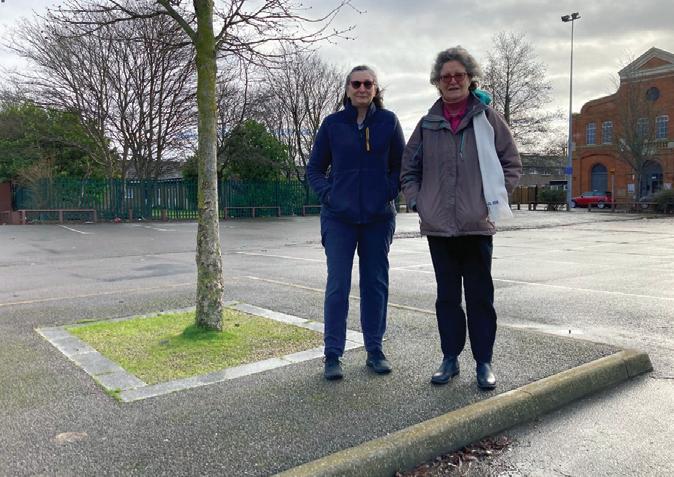
The Department for Levelling Up, Housing and Communities gave North East Lincolnshire Council an £85,000 grant to create new urban green space or refurbish existing parks. The funding has enabled the council to plant the trees at the Albion Street Playground while community groups will create the new community garden on part of the underused car park.
Cllr Stewart Swinburn, portfolio holder for environment and transport at North East Lincolnshire Council, said: “By transforming part of this underused car
park into a vibrant, community garden, the groups involved can create a new, muchneeded green space. This project was earmarked for funding by the government because of the lack of greenery in the area and the levels of levels of deprivation.”
Encouraging people to grow, prepare and cook their own food is one of the main drivers behind the project. Mary Vickers,
devised by Urban Design Hub, an interdisciplinary architectural design studio based in the Jewellery Quarter.




The studio said: “Working with Birmingham City Council and Slow Food UK, we developed a strategy that addresses the need for food growth in cities. Through circular thinking and creative transferable design principles, we have transformed the Vyse Street car park into the city’s first sustainable hub.”
The rooftop farm was created with communities in mind. Urban Design Hub has built relationships with local universities, businesses, and residents to understand their needs and how such a project would benefit their daily lives.


Founded in 1989, Slow Food is a global organisation that works to preserve local food cultures and traditions, counteract the rise of fast food and boost people’s interest in what they eat and where it comes from.
community food co-ordinator in North East Lincolnshire, has been working with The Salvation Army, St Andrew’s Church, the Rock Foundation, the Fisherman’s Mission and other local community groups to set up the garden. She said: “Providing an opportunity for people to learn to grow at least some of their own food is immensely valuable. Simply working together in the open air is known to increase wellbeing. Adding this to the provision of practical growing and cooking skills can greatly increase both individual and community resilience. It can also be fun!”
The Salvation Army has a training kitchen opposite the car park. Major Alison Gardner, church leader at Grimsby Salvation Army, said: “This project will provide many things, not only fresh produce for people who are struggling with the cost of living and reliant on food banks, but a peaceful place where people can sit among the trees in East Marsh, enjoy a picnic and view the dock tower.”

A web-based mapping system is offering local authorities a way to digitise their Traffic Regulation Orders (TROs). The system has been developed by VertexGIS.
The VertexGIS team designed TROmapAp to be used by anyone involved in providing traffic and kerbside data, including engineers, parking enforcement teams and councillors.

The system has been devised to be easy to use by road users, whether they are commercial organisations such as utility companies, members of the general public or the adjudicators at the Traffic Penalty Tribunal (TPT) when assessing appeals against penalty charge notices.
VertexGIS co-founder Jenny Lonergan said: “The app has been developed for local authorities as an alternative to licensing expensive proprietary TRO software and associated training courses currently available. These can cost hundreds of thousands of pounds over a 10-year period, ad infinitum.
“Our goal was threefold. First: to create the app on software that over 70% of UK councils already have, the Esri platform, saving local authorities that substantial TRO software and cloud hosting cost.
“Second: as training is required to use proprietary TRO software, staff turnover, absenteeism or sick leave, can lead to a TRO database not being maintained. Once out-of-date it can be almost impossible for extremely busy engineers to find
the time to bring it back up-todate. A solution would be a high quality mapping service that is more cost efficient than in-house mapping and always available, meaning the possibility of outof-date TROs due to staff turnover or absence can be eliminated for good.
“Third: Existing TRO mapping is not always easy for engineers, parking staff, civil enforcement officers or the public to navigate or decipher, with myriad coloured lines, patterned polygons, legends, text boxes and pop ups. An improved TRO app must be as simple for the public to understand as a skilled engineer familiar with their TROs.



“Open a VertexGIS web app and it’s clear where the restrictions are within the borough or district boundary, zoom in and the restrictions are labelled with TSRGD sign labels, replicating the signs seen on street. This means you understand immediately what you are looking at.”







The new TRO map was first
made available online in March 2022 for Basingstoke and Deane Borough Council. Becky Poulter, the council’s senior engineer, said: “We work closely with VertexGIS, and continue to use them for consultation drawings and maintaining our map-based order, keeping it completely upto-date. This saves time and enables the amendment process to run efficiently.”
Since exhibiting at Parkex 2022, VertexGIS reports that TROmapAp has attracted interest from a number of local authorities. In February this year, TROmapAp went live at Wokingham Borough Council.
Geoff Hislop, Wokingham’s parking manager, said: “Processing Traffic Regulation Order applications from our community requires a high level of staffing costs, site visits and public engagement.
“Providing digital mapping that is easy to understand and mirrors what’s on the ground is the best way to show the public
Cornwall Council has extended its contract with parking software specialist Unity5.
Cornwall appointed Unity5 in 2020 to provide its ZatPark parking management software for processing penalty charge notices (PCNs), generating Notices to Owners and correspondence relating to representations and appeals.
The appointment also meant ZatPark was used for administering the county’s parking permit schemes, generating both physical and virtual parking permits.

In 2018 Cornwall Council had produced its Positive Parking Framework for Cornwall to ensure that it delivered its services well and that all stakeholders, residents,
businesses and visitors could enjoy a positive parking experience.

The council recognised that key to delivering improvements to the services was to invest in new IT and make better use of existing technology.
Dave Herbert, chief executive of Unity5, said: “The original contract to Unity5 was therefore awarded following a comprehensive procurement process, and this extension demonstrates the success of the partnership between the local authority and Unity5.
“The pandemic initially impacted on the roll-out of the system, but a joined up, flexible and collaborative approach by both
what the restrictions mean. One of the highlights of this system are the sign labels which provide instant clarity.
“Having a consultancy providing our TRO support with digital mapping has improved the service we can offer to the public. Our civil enforcement officers use the mapping to help plan routes and train new officers to ensure they cover all restrictions in their beat. They say it’s the best mapping they have ever had and use it all the time. It is helping to develop our parking strategy for the future.”
Jenny Lonergan said that VertexGIS is seeking to work in partnership with local authorities, developing solutions that meet their needs. She said: “We offer a package of TRO mapping, surveying, cloud-hosted TRO apps, consultation drawings and all maintenance of TRO data ensuring TROs remain accurate. A Moving Traffic Order map, MTROmapAp, is now available.
“We don’t license a software application to councils to use in-house. Our service is to digitise local authorities’ traffic regulation orders, make them available for all online and maintain them on an ongoing basis. This is a more cost-effective model by some measure.”
Looking ahead, she said: “The government have a desire for all councils to digitise their Traffic Regulation Orders in preparation for connected and autonomous vehicles, to help reduce carbon and improve traffic flow. Our goal is to help councils digitise their TROs in a form that everyone can use and easily understand.”
parties ensured that the system was implemented in a robust and safe manner, with approximately 200,000 PCNs migrated into it.”
Zoe Hall, strategic parking manager at Cornwall Council, said: “Bringing Unity5 and its ZatPark solution onboard has been a hugely positive step forward for us. We’ve benefited from the flexibility of the technology, and the digitisation of our permits through ZatPermit was a valuable and much-needed update. We are delighted to have extended our contract and are looking forward to continuing our work together.”
Unity5 works with both private parking operators and other local authorities, including Bolton and North East Lincolnshire.
Parking space availability information has overtaken traffic information to be listed as the most crucial incar feature for motorists worldwide, according to a new global survey. Interest in connected parking features which support viewing availability, reserving and paying for spaces has increased significantly overall, according to the latest Connected Features Interest Survey Report carried out by TechInsight, a source of intelligence related to semiconductor innovation and surrounding markets.
Drivers’ desire for in-car payment functionality continues to rise, with a 56% probability of choice for respondents when flagging the most important connected car features.

However, opinions on being alerted about events such as traffic incidents vary considerably, especially amongst younger US drivers who heavily favour having parking availability over alerts.
Determining parking space availability near destinations is now the top requested in-car connected service for drivers around the world, according to the survey.
The Connected Features Interest Survey Report, completed in the fourth quarter of 2022, assessed 28 connected features, with 4,990 drivers in the USA, UK, Germany, France, Italy and China asked to rank their interest in each service to gauge demand.
Respondents were questioned on how much they valued the 28 different connected car features, covering a variety of services from parking information to traffic alerts, in-car payments, the ability to read/update social media through the vehicle and being able to share sat-nav routes with friends and family.
Driving-related functionality, such as assessing the availability of parking spaces near a destination, traffic alerts and being able to pay for parking, fuel and tolls from the car are amongst the most desirable features globally.
In-car parking information was ranked the most valuable feature cited by Chinese drivers, with European motorists classing it as their second priority, only 1% behind the top-rated choice, and American respondents placed it at 67%, just 3% behind their top priority, traffic information.
Drivers in Western Europe and China are increasingly concerned about whether they will be able to find parking at their destination. Additionally, those with larger vehicles have a higher preference to reserve spaces at their destination. The survey results show drivers’ increasing expectation for parking to be seamlessly integrated into the in-car navigation process.
Meanwhile, the survey data highlights how in-car payments have gone from being predominantly used by early adopters, to a highly desirable function, with a probability of choice for 56% of
Parking information is ranked as the most valuable connected car feature by drivers, TechInsight’s new global survey reveals
global respondents and ranking just 12% behind the top global priority. The rising demand for in-vehicle payments covers services such as parking, fuel, tolls and food across all age groups and technology engagement levels. The results show drivers gaining increased confidence using these services due to the reduction in perceived complexity and valuing the heightened convenience and removal of physical contact required.
The survey shows that is not just early adopters who want this type of technology in their cars; having in-car connected services that help with finding a parking space was not only the top priority for late adopters in Europe but also for the youngest drivers aged 18-24 years old.
Parking space information ranked similarly high in the USA, with 18-24 yearolds and 35-44 year-olds citing it as their top priority – notably six places above alerts such as traffic for younger drivers. This shows the younger generation
looking to avoid receiving streams of alerts during journeys and preferring to be automatically rerouted to their destination with parking successfully at their destination cited as their most significant concern.
Figures from China show that the ability to make in-car payments has changed from being a “nice-to-have” to a “highly desirable” established feature for many young drivers – with double-digit year-onyear growth expected in this market from 2022 to 2030 – recognising that motorists have an increased level of trust in making payments from their vehicles and a desire for maximum convenience and a seamless user experience.
The survey also highlights how fashionable new features such as in-car games, e-mail or social media integrations and calendar management, which are now available in an increasing range of cars, are typically seen as far less desirable than those that are journey-related.
Parkopedia is a connected car services provider used by automakers, organisations and drivers to find and pay for parking, EV charging, fuel and tolls across 90 countries. It is also developing highly detailed parking maps and corresponding algorithms to help drivers and self-driving vehicles navigate to an open parking space indoors.
Commenting on the TechInsight survey results, Duncan Licence, chief product officer at Parkopedia, said: “As our roads get busier and drivers’ lives become more hectic, we are not surprised to see demand for journey-related connected features that make driving safer and more convenient, continuing to rise.
“However, the challenge now for OEMs is to prioritise the most in-demand services and provide a holistic driving experience with the seamless integration of navigation and parking services to take the stress out of their drivers’ journeys.
“This latest survey shows that many automakers are still lagging behind their customers’ expectations when it comes to delivering the right services, with select OEMs electing to withhold certain connected car features as a cost-saving.
“However, the data and feedback globally shows that many drivers are likely to avoid certain vehicles or brands if their data, mapping and in-car payment services do not meet today’s expectations.”
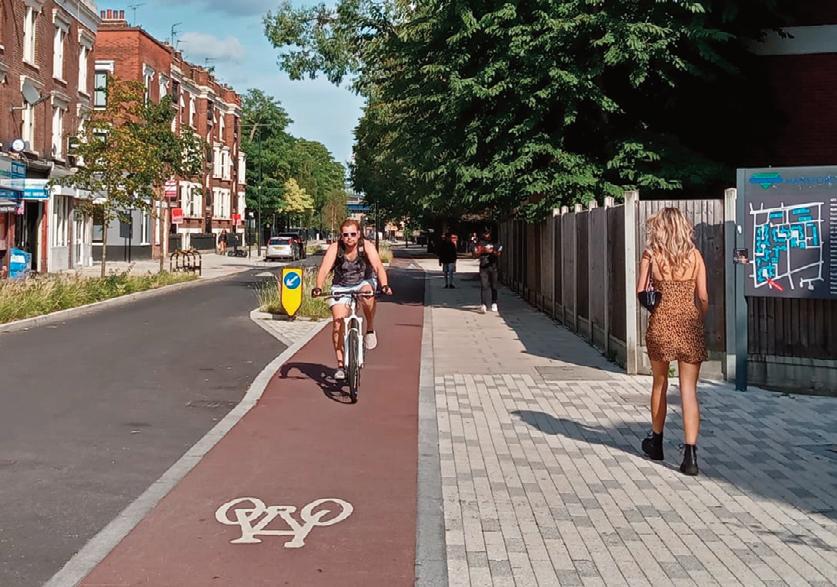
Liveable Neighbourhoods 2023 will explore all the vital components needed to create better streets.
Hosted by Transport for London in partnership with Landor LINKS, the event offers updates on the latest Liveable Neighbourhoods schemes.

There will be panel discussions on:
l Using data and evidence to support road improvements –dispelling myths, gaining public trust and winning hearts and minds
l The importance of accessible and well connected public transport
l How School Streets, Play Streets and other local schemes can, collectively, start to change the way we view our neighbourhoods
l Improving the street environment and building in climate resilience. Creating rain gardens, pocket parks, planters and parklets. How peoplefriendly places help tackle flooding and air pollution
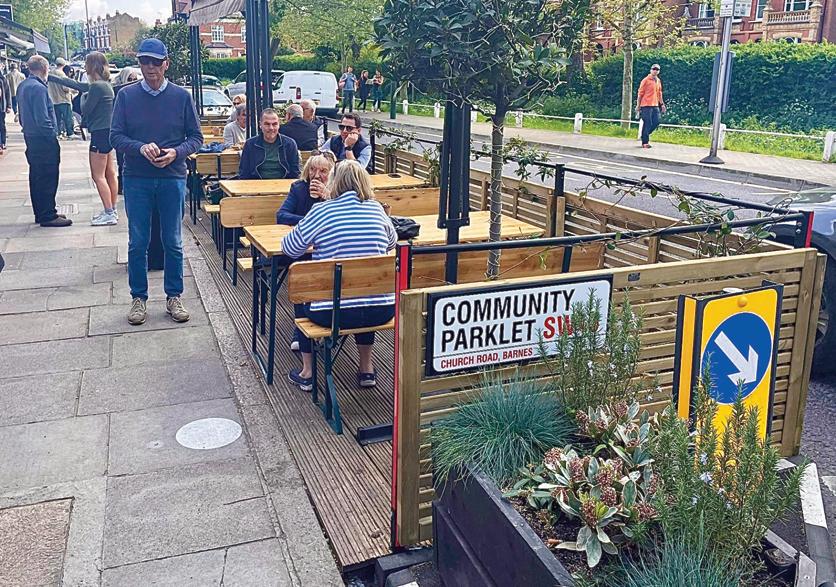

There will also be specialist-led sessions on how to secure funding for schemes, how to achieve good resident engagement, the role of micromobility and why mobility hubs should be an intrinsic part of people-friendly streets.
For exhibition and sponsorship

information: Daniel Simpson
E: daniel.simpson@landor.co.uk
For delegate enquiries – contact the events team
E: conferences@landor.co.uk



Headline Sponsors:
Organised by:
Supported by:

Presented by:
Mobility hubs are spaces where public, shared and active travel modes are co-located alongside improvements to the public realm. They enable travellers to make smooth and safe transfers between different modes, swapping private cars for shared vehicles, bikes, buses, trains, scooters or walking.
When reimagined as mobility hubs, car parks and park & ride sites are no longer just somewhere to store vehicles. Instead they become genuine interchanges. Meanwhile, the provision electric vehicle (EV) charging points at mobility hubs supports the transition to zeroemission vehicles.
The emergence of service hubs is also seeing car parks being transformed into logistics bases for last-mile delivery services, click & collect locations and homes to dark kitchens and dark stores.
The second annual Mobility Hubs conference sees speakers and expert panels explore the design, implementation and operation of mobility, EV and service hubs. The day will draw on real world experience and showcase best practice from around the UK and internationally.
Speakers include:
l Olga Anapryenka, principal consultant, new mobility, Steer
l John Austin, researcher and working partner, University of Plymouth
l Trevor Brennan, project lead, England’s Economic Heartland
l Kris Beuret, director, Social Research Associates
l John Dales, director, Urban Movement
l Matt Griffiths-Rimmer, director of communications and partnerships, Hadley Property Group

l Dan Gullock, architect, director, Fatkin
l Kate Jack, sector lead for smart mobility, Stantec
l Mar us Lauble, managing director, HUBER Car Park Systems


l Matthew Ledbury, senior policy and advocacy officer, CoMoUK
l Simon Lusby, technical director, head of transport & sustainability, City Science
l Habib Khan, founder & director, Meristem Design

l David Knight, director, transport planning, Norman Rourke Pryme
l Julian Scriven, managing director, Brompton Bike Hire

l Mark Selby, director, Project Beyond Consortium
l Grace Solsby, principal consultant, City Science

Exhibitors include:
The event’s exhibition provides an excellent opportunity to showcase your systems and services. To find out how your organisation can be part of the day contact Jason Conboy on: jason.conboy@landor.co.uk

Editorial Managing editor:
Mark Moran Tel: 020 7091 7871 mark.moran@landor.co.uk

Production and design production@landor.co.uk
Advertising, sponsorship, marketing and exhibition packages
Jason Conboy Tel: 020 7091 7895 jason@landor.co.uk


Subscriptions
Christina Pierre Tel: 020 7091 7959 subs@landor.co.uk
Accounts
Irina Cocks Tel: 020 7091 7854 irina.cocks@landor.co.uk
Business manager Rod Fletcher Tel: 0191 280

“Nothing ages so quickly as yesterday’s vision of the future!” said the American film critic Richard Nelson Corliss. Science-fiction movies get many things wrong, especially about how we travel. If we were to believe Blade Runner, Back to the Future and Minority Report, the skies should be full of flying cars and the streets filled with self-driving taxis and hoverboards.
Meanwhile, the car industry has displayed a propensity to get the future even more wrong than the dream factories of Hollywood. Missteps such as atomic cars and the electric Sinclair C5 microcar will be among the ideas on display at the National Motor Museum as part of Motopia? Past Future Visions. The exhibition title is inspired by the British architect Geoffrey Alan Jellicoe who, in the 1950s, described the place where vehicles and humans co-exist in harmony as ‘Motopia’.
Jon Murden, chief executive of the museum, says: “We’ll explore how radical motoring concepts from the past remain relevant today and how these have influenced what we ride and drive, the nature of our towns and cities, the way we work, shop and socialise.”

However, the movies and the carmakers do sometimes get things right. The 1997 thriller Gattaca is set in a future where people drive electric versions of 1960s classics such as the Rover P6 and Citroen DS. The current trend of retrofitting classic vehicles with electric powertrains makes this a pretty good, and a good looking, prediction. Motopia? Past Future Visions is at the National Motor Museum, Beaulieu from 14 April
Mark Moran Editor
Carmakers are as bad at predicting the future as Hollywood... but every so often they get it right
UK new car registrations in March rose by 18.2% to deliver the best ‘new plate month’ performance since before the pandemic, according to the latest figures from the Society of Motor Manufacturers and Traders (SMMT).
The increase saw 287,825 units delivered, the eighth consecutive month of growth for the new car market, as supply chain challenges slowly continue to ease.
As a result, the first quarter of 2023 is the strongest since 2019, with just under half a million new cars joining the road. This represents an additional £2.7bn of deliveries, underlining the contribution the sector can make to UK economic growth, despite the market still being significantly below pre-pandemic levels, down 29.5% on Q1 2019.
Registrations rose across all sales types, with deliveries to
March New Car Registrations 2007-2023
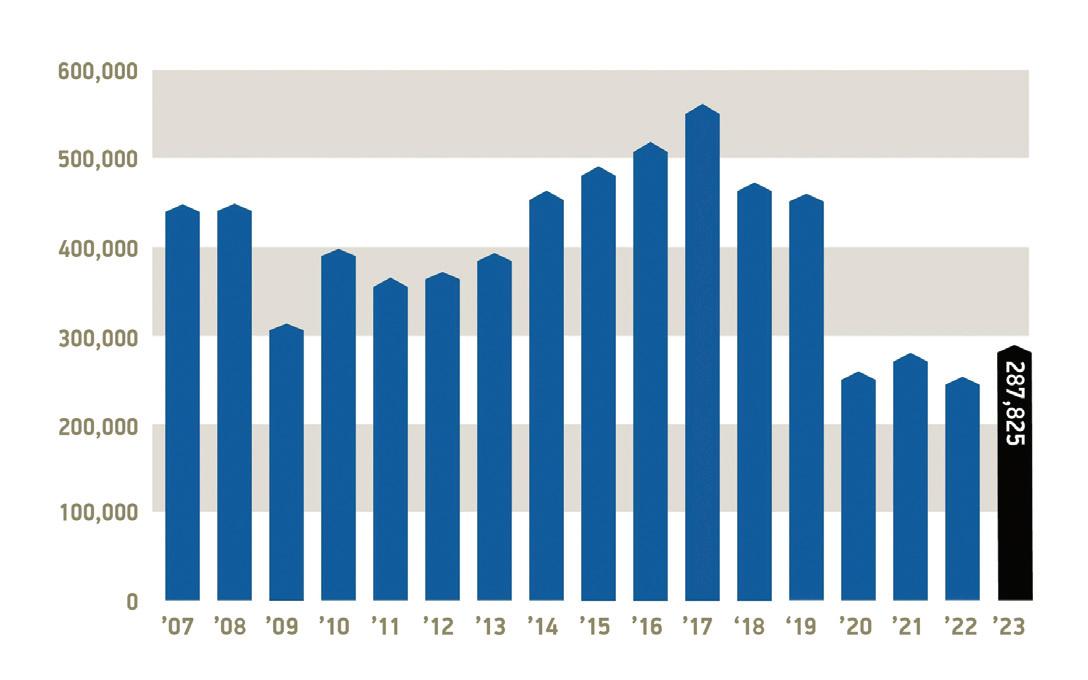
comprised 22.4% of the market – a slight decline on 2022. The biggest growth, however, was in hybrids (HEVs), with a 34.3% surge helping electrified vehicles account for more than one in three registrations for the month.
private buyers up by 1.4%, and those to businesses with fleets of fewer than 25 vehicles up 26.0%. Large fleets, however, were the predominant drivers of March’s growth, with registrations rising by 40,651 units, a 40.9% increase to take an overall 48.6% market share. By segment, superminis posted the largest percentage growth – up 27.2%, to remain Britain’s most popular car type. Lower medium and dual purpose vehicles were the second and third most popular respectively, with all three

vehicle types combined representing 86.5% of total registrations.
Petrol-powered vehicles remained the most popular fuel type, comprising 56.3% of new units, while battery electric vehicle (BEV) deliveries reached a record monthly high of 46,626, representing growth of 18.6%.
Overall, the BEV market share remained almost the same as last year at 16.2% and, with plug-in hybrid (PHEV) registrations growing by 11.8%, plug-in registrations
Ford says it is on track to achieve carbon neutrality no later than 2050 across its global vehicles, operations and supply chain.
The global carmaker has released Road to Better, its 2023 Integrated Sustainability and Financial Report, which details the company’s progress on creating a more sustainable, inclusive and equitable transportation future.
In Europe, Ford operations, logistics and direct suppliers are aiming to achieve carbon neutrality in 2035, as well as zero tailpipe emissions for all cars and vans.
“We believe the long-term success of any business is inextricably linked with creating value for customers, employees and communities, while also caring for the planet,” said executive chair Bill Ford.
“We are undertaking a massive transformation to lead the electric and connected era of transportation and are committed to being transparent about our progress and opportunities for improvement.”
The new report also highlights progress being made on initiatives aligned with the company’s commitment to source raw materials that are responsibly produced and make its EV and battery supply chain more transparent.
Cynthia Williams, Ford’s global sustainability director, said: “In 2022, we made a number of advancements toward carbon neutrality, including
introducing new exciting EVs, upgrading our facilities, investing in carbon-free and renewable electricity, and using our purchasing power to help scale low-carbon materials. We’re also creating new visibility and accountability for a global EV and battery supply chain that upholds our values.”
Ford of Britain has launched its UK Road to Better website, with France, Germany, Italy, Spain and further markets to follow. These sites will highlight Ford initiatives designed to help build a more sustainable future and will demonstrate progress towards defined sustainability goals.
Ford says it is dedicating more than $50bn from 2022 through 2026 to develop and manufacture electric vehicles and batteries.
The company says it is on the path to reach a
With the publication last week of the consultation on a zero-emission vehicle (ZEV) mandate – due to come into force in less than nine months – the market will have to move more rapidly to battery electric and other zero tailpipe emission cars and vans.
Electric models are coming to market in greater numbers, but the SMMT suggests that consumers will only make the switch if they have the confidence they can charge whenever and wherever they need. Success of the mandate, therefore, will be dependent not just on product availability but on infrastructure providers investing in the public charging network across the UK, said the automotive society.
targeted annual production run rate of 600,000 EVs by late 2023, and more than 2 million by the end of 2026. By 2030, half of Ford’s global vehicle sales volume is expected to be electric.
The report outlines statistics on the impact of this strategy, including the carbon dioxide emissions savings of driving a Ford EV. Estimates show that depending on the model, driving a Ford EV could reduce lifetime carbon dioxide emissions by as much as 60% when charged with US grid-average electricity compared to driving a similar internal combustion engine vehicle. For the Ford F-150 Lightning pick-up, this carbon dioxide reduction over the vehicle’s lifespan is equivalent to the carbon dioxide saved by not using approximately 33,225 litres of petrol.
Beyond reducing tailpipe emissions from its vehicles, the Ford carbon neutrality plan focusses on reducing emissions from the facilities, processes and electricity that support the company’s operations and global supply chain.
Ford claims to have reduced Scopes 1 and 2 emissions by 35.4% since 2017, which accounts for direct emissions from its operations and indirect emissions from energy purchases.
Ford has invested more than $26m in facility upgrades to improve energy efficiency and conservation across its facilities and manufacturing processes, helping the company achieve a 40% reduction in absolute manufacturing greenhouse gas emissions from 2017.

The UK government has launched a package of measures designed to support the decarbonisation of transport as part of a new plan to achieve net zero. Key among them are initiatives designed to support the shift to electric vehicles (EVs): a new investment of £380m in the provision of public chargepoints via the Local Electric Vehicle Infrastructure (LEVI) fund; and the zero-emission Vehicle (ZEV) mandate.
The transition to zero-emission vehicles now forms part of a wider strategy dubbed Powering Up Britain: Energy Security Plan unveiled by the government.
The ZEV mandate and LEVI fund build on progress already made in the transition to electric vehicles, with almost 17% of new cars sold last year being zeroemission.
The EV initiatives support the government’s commitment to end the sale of new petrol and diesel cars and vans by 2030, and from 2035 all new cars and vans must be fully zero-emission at the exhaust. Between 2030 and 2034, all new vehicles must be either fully zero-emission or be able to drive a significant distance with zero emissions.
Transport secretary Mark Harper said:
“Transport is one of the most important sectors for achieving net zero by 2050 and so we must accelerate our efforts to decarbonise how people get from A to B while growing our economy and supporting thousands of green jobs.
“From expanding our charging network to boosting the production of cleaner aviation fuel, today’s announcement is a great stride forwards, offering people more choice on how to stay connected while delivering the carbon reductions needed to achieve net zero.”
The Department for Transport (DfT) has
The government has launched a £381m Local Electric Vehicle Infrastructure (LEVI) fund alongside an additional £15m for the OnStreet Residential Charging Scheme (ORCS). The LEVI Fund gives local authorities across England the opportunity to apply for dedicated electric vehicle (EV) infrastructure and resource funding. The Office for Zero Emission Vehicles (OZEV) and the LEVI Support Body (Energy Saving Trust, Cenex and PA Consulting) are providing ongoing support and guidance to all LEVI funding applicants.
To enable the transition to low carbon transport, ahead of the phase out of new petrol and diesel car sales from 2030, electric vehicle infrastructure needs to keep up with the pace of EVs on the road. Public UK charging devices have more than tripled in four years from 10,300 devices in January 2019 to over 38,700 in March 2023.
The LEVI Fund will give local authorities more power and support to further increase the pace and
scale of rolling out chargepoints across the country, in locations where they are most needed.
The announcement will further accelerate the deployment of local, on-street charging infrastructure across England, especially for those without charging at home:
• £343m capital funding will be made available to local authorities in England, for the installation of EV chargepoints. This includes chargepoint hardware, electrical connection costs, civil engineering costs and other installation costs
• £37.8m capability funding aims to develop in-house expertise within LAs in England, and the ability to coordinate chargepoint plans and work with private operators

• An updated On-Street Residential Chargepoint Scheme (ORCS) remains available to all UK local authorities in 2023/24, with a further £15m available.
LEVI funding is available to eligible county councils, unitary authorities and combined authorities in England.
also unveiled its proposals for a zeroemission vehicle mandate which, from next year, will set minimum annual targets for the percentage of new car and van sales that must be zero-emission.
The DfT said it wants to provide longterm certainty to industry, increasing the number of zero-emission cars available for people to buy and setting a clear direction for operators to accelerate the installation of chargepoints. It proposes that with a greater proportion of zeroemission vehicles on the UK’s roads, more drivers will benefit from lower overall running costs against their petrol and diesel counterparts. This will support a cheaper second-hand EV market while improving air quality across the country.
The final proposals are being jointly consulted upon by the UK government, alongside Scotland, Wales and Northern Ireland, and are the single largest carbon saving measure identified in the government’s Net Zero Strategy.
The government also wants to support the work of manufacturers in the EV sector by giving them flexibility through a credits-based trading system, enabling them to bank credits in years when they exceed annual targets for use in future years or trade them with other manufacturers that have fallen short. If manufacturers do not meet their yearly targets, they could face possible fines of up to £18,000 for every vehicle they miss their target by.
The UK government has reaffirmed its commitment to end the sale of all new petrol and diesel cars and vans by 2030 and for all new cars and vans sold after 2035 to be zeroemission at the tailpipe. It has responded to a technical consultation on the design of a zeroemission vehicle (ZEV) mandate and next steps in the process.
The trajectories proposed in the technical consultation on the mandate have been confirmed. They are that 22% of car production must be EV by 2024, 80% by 2030 and towards 100% by 2035.
The van trajectory is higher than originally suggested with 10% by 2024, 70% in 2030 and, ultimately, 100% by 2035.
The government has effectively ruled out allowing vehicles to be sold to run on ‘expensive’ e-fuels after 2035 with a clear definition that a ZEV “must emit no CO2 or any other targeted greenhouse gases at the exhaust and have a minimum range of at least 120 miles (Worldwide Harmonised Light
The ZEV mandate aims to ensure that vehicle manufacturers have to sell a rising proportion of EVs in the lead up to 2030, beginning in 2024. Through the mandate, manufacturers will have ZEV sales converted into ‘certificates’ and be required to hold a certain number at the end of each year in relation to the total number of vehicles which they have sold. Manufacturers that do not meet their targets will be issued with fines, suggested to be £15,000 per car.
The government says that it will need further consultation on ZEV mandate target trajectories beyond 2030 and to determine a definition for “significant zero-emission capability”, as the two provisions are intrinsically linked. The new consultation will close on 24 May 2023.
The government said earlier that it will continue to regulate the carbon dioxide (CO2) emissions of the nonZEV portion of the fleet to make sure they do not increase.
A plan to help councils, businesses and the freight and servicing industry switch to cargo bikes and e-cargo bikes for deliveries has been unveiled by London’s walking and cycling commissioner Will Norman. The plan was launched at the National Cargo Bike Summit in central London, organised by Landor LINKS and hosted by the City of London Corporation.
“Cargo bikes are no longer a niche concept, and they can be real game changers when it comes to delivering freight and servicing trips,” Norman said. “Not only do they provide environmental benefits by not contributing to air pollution, they also make journeys more efficient, and present a much lower risk of danger to people walking and cycling than vans and HGVs.”
By 2030 cargo bikes could replace up to 4% of van kilometres across Greater London, and as much as 17% of van kilometres in central London, Transport for London (TfL) estimates. It calculates that the carbon savings resulting from cargo bike growth across Greater London will be up to 30,000 tonnes of CO2 a year by 2030.
In London, 90% of all goods are transported by road while around half of the value of household expenditure in London relies on freight, said TfL. Road
freight is a major source of nitrogen dioxide emissions, a key contributor to London’s toxic air, it points out, adding that cargo bikes offer a “much cleaner way to deliver freight and services and deliver considerable air pollution savings, contributing to healthier and safer streets and enabling better use of urban space”.

The use of cargo bikes for freight and servicing trips is becoming more widespread, with businesses including Amazon and DHL, according to TfL.
Cargo bikes also present a lower risk to people walking and cycling than vans and heavy goods vehicles (HGVs), helping to make London’s streets safer and more
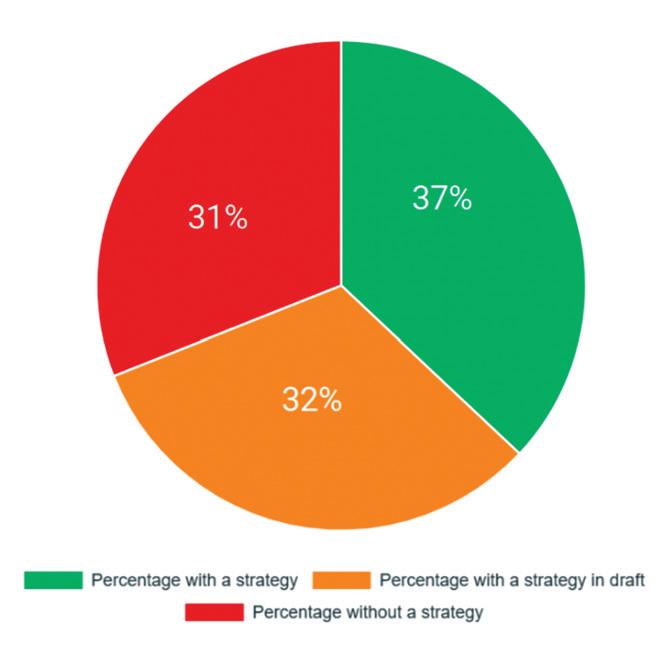
The British Vehicle Rental and Leasing Association (BVRLA) has discovered that 40% of local authorities in the UK are yet to engage with the fleet sector when considering electric vehicle charging needs. The results form part of the association’s new Fleet Friendly Charging Index, which also shows that nearly two-thirds (63%) of authorities are yet to publish an EV strategy.
The BVRLA Fleet Friendly Charging Index highlights the scale of the challenge for fleets, who regularly battle with unreliable, inaccessible, or absent public charging infrastructure.
The index and guide are designed to provide insights on the range of charging challenges that fleets are experiencing and highlight some ways in which local and national government, airports and electricity network operators (DNOs) can improve things.
Gerry Keaney, BVRLA chief executive, said: “The fleet sector is pulling the nation forward on its drive to decarbonise, but charging infrastructure is failing to keep up. Local authorities have the power
to make a real difference and we want to help them help fleets.
“Armed with our Fleet Charging Guide, we are supercharging our engagement on this topic. Conversations are taking place with decision
attractive for people using public transport, walking and cycling, says TfL. Christina Calderato, TfL’s director of strategy and policy, said: “Freight and servicing are the lifeblood of London’s economy but also contribute to air pollution, carbon emissions and traffic congestion. We are determined to provide a green, healthy and sustainable future for all Londoners and cargo bikes can play a vital role in cutting carbon emissions, air pollution and road danger. We will continue to work closely with our industry partners, businesses and boroughs across the capital to make our vision for cleaner and safer freight a reality.”
makers the length and breadth of the country. The index shows where the most collaboration is needed, and we are fully equipped to share the insights that will shape a fleet friendly network from Land’s End to John o’ Groats.”
The index was launched alongside an updated Fleet Charging Guide at a reception in the House of Commons on 15 March.
The launch event saw the association and senior industry stakeholders meet with 80 MPs from all parties. The politicians heard about the vital role that fleets play in bringing electric vehicles to UK roads, as well the extreme barriers presented by the current charging infrastructure. The MPs were shown how their constituency ranks at a national level and asked to pledge to support the roll-out of a suitable EV infrastructure.
Transport minister Jesse Norman MP told the gathering: “In this market and in its wider supply chains, the BVRLA and its members are, from a government standpoint, a critical partner in the transition that we’re making to zero-emission vehicles. What we’ve seen today from all of the people taking part here is the importance of collaboration, and developing the two parallel tracks of more vehicle use and better infrastructure. That’s what we’re committed to within government.”
and that this review should also consider how hotels and visitor attractions could be encouraged to have charging points.
The Welsh Government’s current strategy for getting more electric vehicles on the road is inadequate, according to a Senedd committee. The Welsh parliament’s Climate Change, Environment and Infrastructure Committee’s latest report analyses the Welsh Government’s commitments as laid up in a 2021 action plan and found multiple failures to follow through on promises to improve charging facilities made less than 18 months ago.
In its report on implementation of the plan, the Climate Change, Environment, and Infrastructure Committee identifies a lack of action on many of the targets set in the strategy. The committee calls for renewed efforts to achieve Wales’ climate targets and create a greener Wales.
The cross-party review has called on the Welsh Government to complete a review as soon as possible and consider how hotels and visitor attractions could be encouraged to have charging points installed.
The Welsh Government EV Charging Strategy was published in 2021 alongside an action plan. Of the nine main commitments made in the document, the cross-party committee found that five of them had not been delivered on time.

In several cases, the Welsh Government indicated it was only just starting to consider whether or how to proceed with certain actions; months after the deadline for them to be completed.
The committee states that the lack of progress undermines the credibility of the action plan and calls into question the Welsh Government’s commitment and ability to follow through on its commitments. In rural areas, the lack of electricity grid capacity is a significant issue to developing more charging points. This has led to long delays in connecting chargers and an uneven distribution of them across Wales, reports the committee.
The action plan also commits the Welsh Government to establishing a “Connections Group” to co-ordinate the development of this infrastructure across Wales, but the group has never been established. A similar problem issue was found in the Welsh Government’s commitment to determine the best locations for charging points across the
country. The action plan proposed setting up a group to bring together private, public, not-for-profit and community organisations, but this has also never been created.

The committee is calling for both groups to be formed in the next few weeks as a matter of urgency. The Senedd members’ report states that the 2,400 chargers in Wales (out of 37,000 across the UK) is the lowest number of public charging devices and rapid/ultra-rapid devices per 100k population in Great Britain.
Despite a large growth in the number of chargers over the last few years, in Wales there is currently just one rapid charger per 15,000 people compared to one per 11,000 people at UK level.
Despite the Welsh Government promising to review building regulations in 2022 to improve the situation, the committee found that this had also not been delivered. EVA Cymru told the committee that regulations in Wales currently lag behind both Scotland and England in terms of requiring charging points in both domestic and commercial properties. It stated: “In Scotland, a standard (7kW) chargepoint must be provided for each residential building with at least one parking space and a ratio of 1:10 for every non-residential building. England has in place similar requirements and these regulations also extend to substantial renovations.”
The committee’s report calls on the Welsh Government to complete a review of building regulations as soon as possible
Llyr Gruffydd MS, chair of the committee, said: “Moving to a greener Wales means more of us switching from petrol or diesel vehicles to electric models. But people will only want to do this if the charging infrastructure in Wales is good enough, and that we’re confident that we could charge our cars when we need to. Frustratingly, this is far from the case today. There has been some progress over the last few years but nowhere near where it needs to be. The Welsh Government’s action plan isn’t even 18 months old yet and some of the targets have already been missed. This is unacceptable and embarrassing.
“When that plan was written, it described a Wales with the lowest electric vehicle uptake and the lowest number of chargepoints in Great Britain, and there’s nothing we’ve seen since then that would have changed that depressing fact. On several issues, it seems more apt to call it an ‘inaction plan’. The Welsh Government declared a climate emergency only a few years ago yet their progress on this crucial issue is already inadequate. The Welsh Government needs to step it up a gear and follow the committee’s recommendations if they’re serious about reducing the nation’s carbon emissions and getting more of us into electric vehicles.”
The Welsh Government responded by stating that Wales had seen the biggest growth in charger and rapid charger provision across the UK. A Welsh government spokesman said: “We welcome today’s report which contains some key learnings for us as we work to deliver the charging infrastructure Wales needs. We were pleased to see that Wales is now showing the greatest percentage increase of any UK region in charging and rapid charging provision. This is thanks to an ambitious delivery programme we have developed with key partners and we now look forward to building on these foundations.”
Speaking on BBC Radio Wales, deputy minister for climate change Lee Waters said: “We’ve got a plan and we are working through it. We’ve got limited resources and rather than just spraying charging points everywhere we are working out where are the best places to put our resource to best effect. I have an electric car and as long as you plan it’s fine. You will not regret buying one and once you have bought one you won’t go back.”
Senedd climate change committee calls lack of progress ‘embarrassing’senedd.wales Welsh Parliament Climate Change, Environment, and Infrastructure Committee

If an electric vehicle charges while driving, the size of the battery can be reduced by up to 70%, and the load on the power grid can be spread out over the day. Charging on the move suits most people, but not everyone. This is shown by a new study from Chalmers University of Technology in Sweden, where for the first time researchers combine the so-called electric road system with real-life driving patterns of Swedish drivers.
The Swedish government has proposed a ban on new petrol and diesel cars from 2030 to reduce carbon dioxide emissions. The same trends are seen across Europe, as demonstrated by the rapidly increasing sales of electric vehicles. As this development progresses, challenges are also increasing, including the uneven load on the power grid and where to charge the electric vehicles.
When vehicles can be charged dynamically while driving, the battery size can be reduced and still meet all travel demands. This results in lower environmental impact and costs, according to new research from Chalmers. In Sweden, the first electric road will be a 21-kilometre stretch between Örebro and Hallsberg.
The Swedish Transport Administration is leading the project and the road is expected to be completed by 2026. It has not yet been decided which type of charging technology will be used.
Several countries, including Sweden, Denmark, and Germany, are testing whether electric road system (ERS) can be used to electrify road networks. An ERS charges moving vehicles with either loops in or next to the road, or with wires suspended above vehicles, similar to trams and trains. All variants mean that vehicles do not need to be parked to charge, and there is less need for large batteries storing energy to overcome “range anxiety”, a term referring to the fear or concern an electric vehicle driver experiences about the distance their electric vehicle can travel before the battery needs to be charged.
Now researchers from Chalmers have used data from over 400 passenger cars to study real driving patterns on different parts of Swedish national and European roads. They have used the data to calculate, among other things, battery size
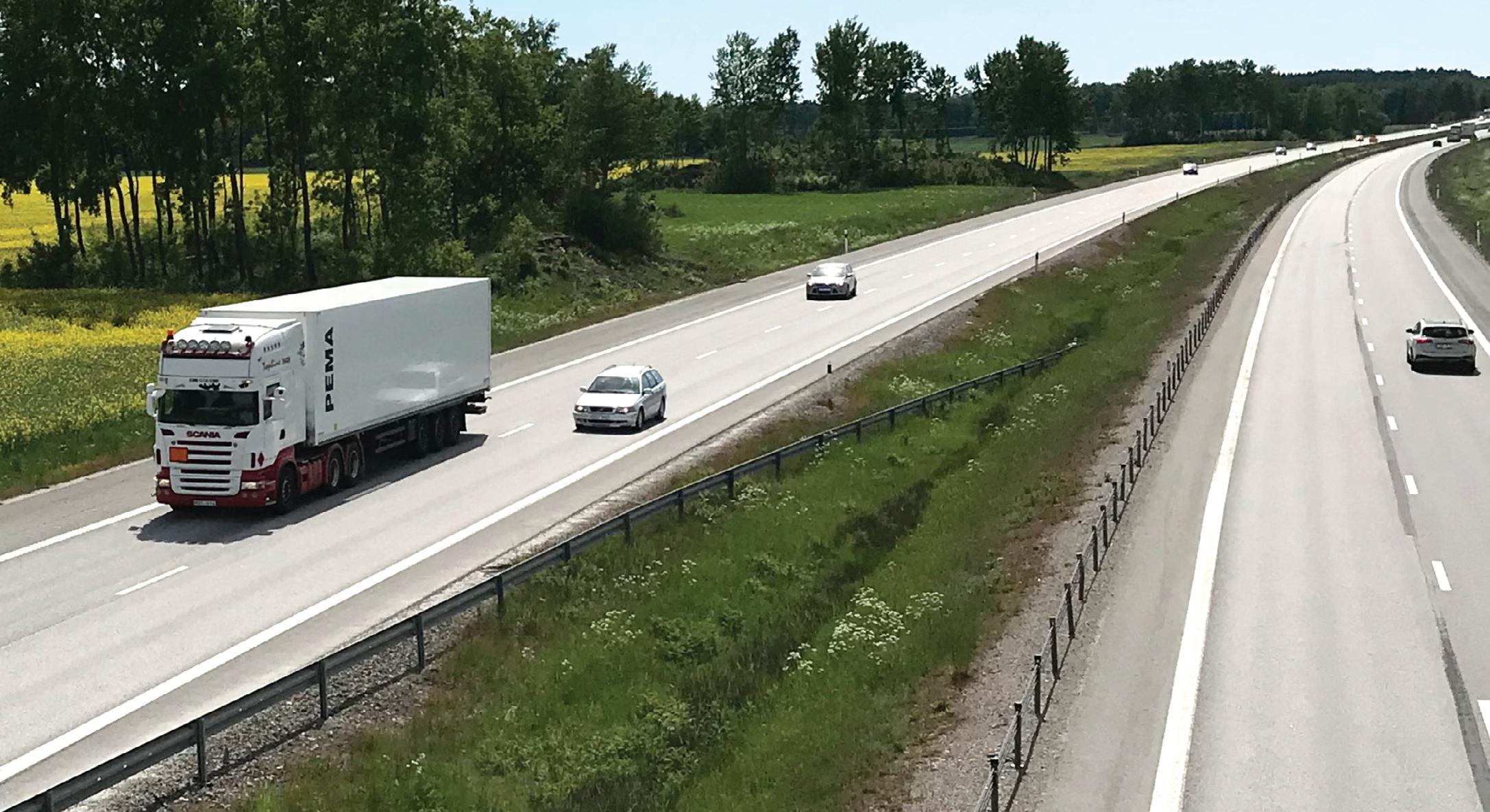
needs to complete all journeys given possible charging options (stationary versus ERS), charging patterns, and total costs including infrastructure and batteries.
The results show that a combination of electric roads on 25% of the busiest national and European roads and home charging would be optimal. The batteries, which account for a large part of the cost for an electric car, can become significantly smaller, at best only one-third of the current size.
“We see that it is possible to reduce the required range of batteries by more than two thirds if you combine charging in this way. This would reduce the need for raw materials for batteries, and an electric car could also become cheaper for the consumer,” said Sten Karlsson, who, together with research colleagues Wasim Shoman and Sonia Yeh, is behind the Benefits of an Electric Road System for Battery Electric Vehicles study.
Other positive effects are that peaks in electricity consumption would be reduced if car drivers did not entirely rely on home charging but also supplemented it with
electric road charging? Karlsson said: “After all, many people charge their cars after work and during the night, which puts a lot of strain on the power grid. By instead charging more evenly throughout the day, peak load would be significantly reduced.”
But different groups of motorists also have different conditions for benefiting from the combination of stationary charging and ERS.
“There are big differences between groups, depending on driving patterns and proximity to electric roads. Even in the optimal case, some would manage with only electric road charging, while others would not be able to use the opportunity at all. For example, we see that those who live in the countryside would need almost 20% greater range on their batteries compared to those who live in a city centre,” says study team member Wasim Shoman. The study also shows that small batteries do not automatically lead to charging through ERS.
Karlsson concludes: “Just because you can charge does not mean the consumer actually wants to do it at every given opportunity. The business model, therefore, becomes extremely important because benefits and costs may become unevenly distributed. And there are no decisions yet on what the business model should look like.”
The Benefits of an Electric Road System for Battery Electric Vehicles study has been funded by Mistra and the Energy Area of Advance at Chalmers University of Technology in Sweden.
The aim of the project was to study what potential benefits there might be with a so-called electric road system (ERS) where cars charge while driving.
While ERS is mainly being considered for trucks to allow them to travel longer distances with smaller batteries, and to avoid waiting for charging, private cars can also benefit. This was the first study to simulate battery charging by studying in detail the movement patterns of 412 privately driven cars on parts of Swedish national and European roads.
Based on the data, the researchers calculated, battery requirements, charging patterns and total costs. The researchers compared three charging scenarios, one with both stationary charging and ERS, one with stationary charging only and one with exclusively ERS charging infrastructure. Trucks or buses are not included in the analysis, so any benefits for these will be added.
A combination of ERS and home charging is optimal and reduces battery demand by 62–71% in the best case scenario. The net savings for the car owner from smaller batteries exceed the cost of ERS. The median battery range required by residents of sparsely populated areas is 15–18% greater than that of urban residents.
Using ERS could also reduce peak charging by spreading charging throughout the day.
Half of UK drivers would buy an electric vehicle if they could use it to power their home, a survey by Indra suggests Drivers growing awareness of the cost of charging up electric vehicles is making the case for vehicleto-everything (V2X) systems, suggests Indra, an EV charging and smart energy technology business that is developing bidirectional charging technologies.
Almost 50% of UK drivers would buy an electric vehicle if they could use it to power their home, suggests a new survey. More than half of UK drivers over-estimate cost of charging an electric vehicle (EV), with 77% wanting more control over their home energy bills.
Indra has conducted a national survey into the latest attitudes and opinions of UK drivers towards electric vehicles, EV charging and electrification. Key findings from the Indra-dex survey suggest that perceived running and purchase costs are putting the brakes on greater EV adoption, meaning thousands of drivers could be missing out on significant cost savings and environmental benefits from switching their petrol and diesel vehicles for electric models.
The survey of over 2,000 UK drivers reveals that despite almost half (47%) worrying about the environmental impact of driving a petrol or diesel vehicle, costs remain the largest barrier to purchasing an EV, with only 30% of respondents likely to buy an electric car in the next 12 months. Some 50% cited price as the biggest barrier, although less than a third (30%) said they were concerned with the lack of public charging points.
The survey also revealed that many drivers believe petrol cars are the most cost-effective mode of transport over the next 6-12 months (37%), followed by public transport (18%) and diesel engine vehicles (18%). EVs came fourth place, with only 16% of those polled believing them to be the cheapest way to travel.
The research also revealed that over 59% of those surveyed over-estimated the cost for charging an EV, with some believing it could amount to £150-£200 for a single charge. These perceptions are contrary to real-world findings, where EV running costs are generally much lower than those of petrol and diesel cars, especially when charged at home.
For example, the average cost of fuelling a petrol 1.5 litre vehicle is £74 for a full tank, equating to approximately 16p per mile. This compares to the
average costs to charge a family-sized EV with a 64kWh battery from empty, estimated to be around £21 when using a standard charger on a standard variable energy tariff.
With the advent of EV-specific tariffs, such as OVO’s Charge Anytime tariff at 10p per kWh accessed using a smart home charger such as the Indra Smart PRO, this could drop to below £7 for a full charge, equating to 2p a mile. This means that drivers of petrol vehicles are paying up to eighttimes more per mile to run their vehicle compared to an EV equivalent.
Mike Schooling, founder and chief product officer at Indra, sees this as just the tip of the iceberg when it comes to cost savings from EVs. “It is already significantly cheaper to run an EV compared to a petrol or diesel vehicle, and this will only improve as we move towards widespread adoption of bidirectional or V2X charging,” said Schooling.
“Bidirectional charging technology takes savings on transport costs to whole new level, enabling EV drivers to not only capitalise on cheaper energy tariffs and lower-carbon energy, but also discharge surplus energy from their vehicles to either power their homes or even trade it back to the grid at peak energy times, when prices are typically at their highest.
“With 61% of drivers admitting they feel they have no control over their home energy bills and 65% believing that turning off appliances is the only way to reduce them, it’s not hard to see how almost half (49%) said bidirectional charging would tempt them to buy an EV.”
Indra developed a bidirectional charger as part of a large-scale trial known as Project Sciurus. The company says trialists of this technology have repeatedly achieved savings of around £100-200 on their monthly energy bills.
This technology is not yet available outside of trials, but Indra has been awarded governmentbacked funding from the V2X Innovation Programme to help enable large-scale adoption of this game-changing technology.
“Bidirectional charging will fundamentally change the way we view and interact with energy and our cars and vans. EVs will effectively become mobile batteries on wheels for harnessing, storing and then using greener, cheaper energy to power our homes or sell back to the grid,” added Mike Schooling.
“In the future, we will no longer be tied to a traditional energy infrastructure, but will be able to access, trade and share energy. This means that EVs and bidirectional charging could play a hugely significant role in creating a flexible, sustainable energy eco-system and enabling the government to achieve its net zero ambitions.”
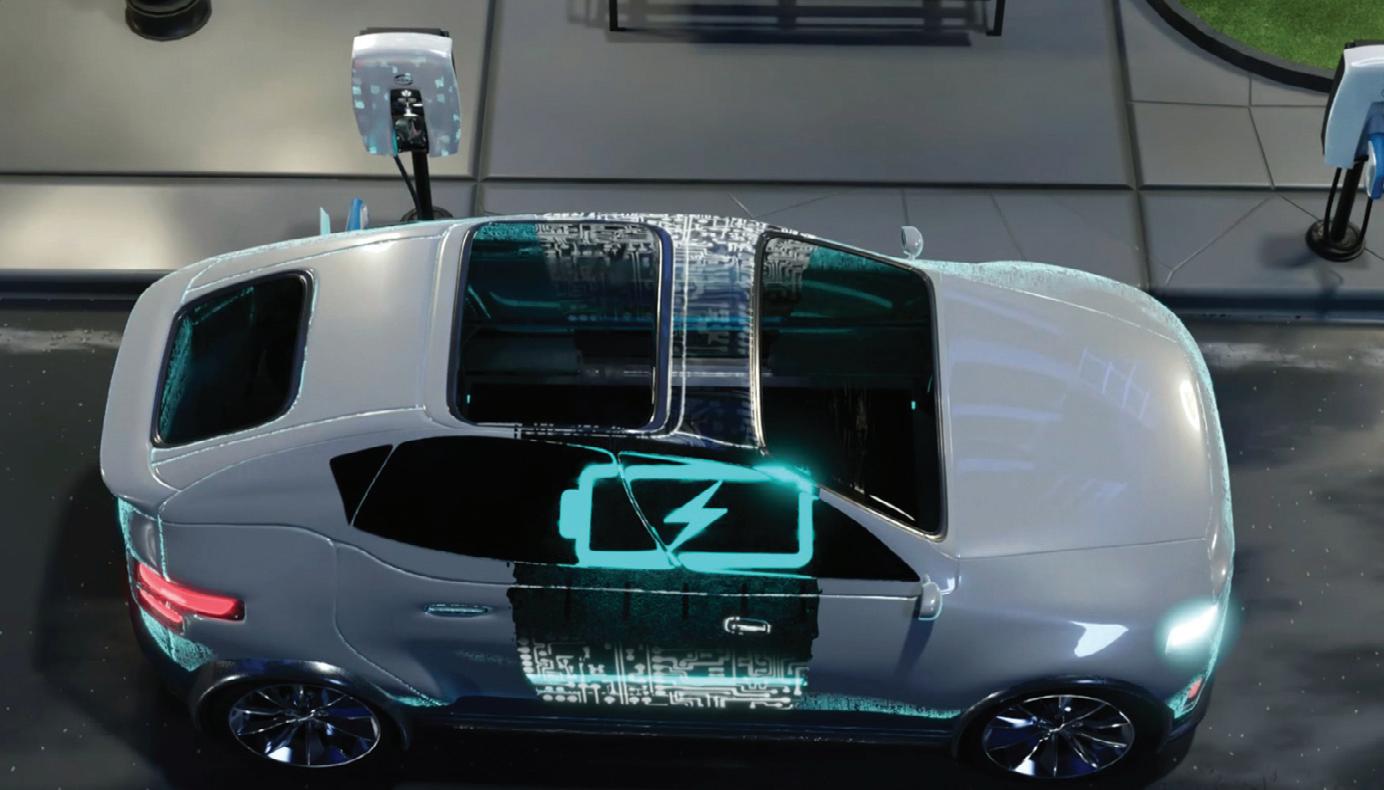
It is now a year since the government published its response to its 2021 consultation on the consumer experience at public chargepoints. This document presented many sensible proposals essential for mainstream EV adoption, and the government has apparently committed to legislation this year. The consultation offered highly valuable recommendations for EV chargepoint operators, a group that will include both the equipment providers and operators. Its proposals are also relevant to councils and all types of private and public car park operators providing services in the public domain.
Now is a good time to revisit the original report. Whatever the shape of the final legislation, many of the recommendations are in everyone’s interest and should be pushed forward. We will look at a few of them here and discuss what can be done.
One thing is clear in the upcoming legislation, it will require easy ways to pay that don’t rely on apps. In particular, it seems almost certain it will mandate contactless payment at newly installed chargepoints (over 7.4kW), and payment roaming at all public chargepoints by connecting to a thirdparty roaming provider, to enable streamlined payment without the need for numerous apps (the Department for Transport confirmed this in parliamentary questions). This is welcome news. Adding new card readers will be a matter for manufacturers. But to fulfil the spirit of the recommendations, old chargers will also need to be upgraded within a period of 24 months. Ideally, they should be retrofitted, but changing physical infrastructure is difficult and costly and the ramifications on budgets and investment models could be significant.
There is no mention in the proposed legislation of cash payment, and this is something almost no chargepoint provider is doing. Yet cash remains popular among older and lower income drivers when it comes to paying for parking and constitutes a key part of the social inclusion agenda. Cash payments could be done by connecting up chargepoints to existing parking payment terminals (which could also provide an alternative to card retrofitting in some cases).
Finally, existing membership schemes will have to ensure interconnectivity with other schemes –and reciprocal payments to each other – so all charging cards and apps work everywhere.
The key is to offer users choice. The significant supply side issues currently experienced by contactless card terminal manufacturers highlights the need to offer flexible payment options and fall-back solutions and this issue will have to be considered by government when it comes to the legislation.
Users want a simple ‘pump price’ comparable to petrol stations which they can easily compare. This first needs universal charging in kWh to make
data comparable (this is already underway). That will need to be backed by interoperability, standardisation, and data sharing between chargepoints – pumping out pricing data in consistent formats. Such data sharing, which should include any additional fees such as parking, would facilitate behind-the-scenes systems to do standardised calculations, presenting a price to the user, or indeed all the prices in the area for that charge criteria.
In addition to sharing payment data to allow roaming, chargepoint operators should be required to let anyone access their location, usage, and pricing data so that third party apps can be built that allow easy comparison, spurring competition for better user experiences. We hope the new legislation will include provision for this.
Handy helpline facilities at chargepoints do not need to be as clunky as motorway phone boxes. Modern technology offers solutions. While a phone number is one possible option, not all chargers have reception, and some people may not have phones with them. VoIP (Voice over Internet Protocol) technology can be adopted to provide chargepoints with built-in connectivity via a call routing platform, allowing drivers struggling to use the equipment or pay to connect via the internet to a helpdesk operative. That operative will automatically have a direct connection to the chargepoint and payment via the same technology platform, so they can start and end charges and manually process payments if things go wrong.
As we near new legislation aimed at improving the chargepoint experience, it’s clear the future of the EV chargepoint must combine the physical charger with a digital equivalent in the cloud –following the model of digitisation that other industries have taken.
Moving the user experience into the cloud opens channels of communication for operators to share data, integrate multi-party payments, and

open direct channels of communication between operators, customers and third parties. Cloudbased platforms also help gather data and customer feedback for parking operators and government. It also allows operators to easily build added-value services on top, such as loyalty programmes and personalised marketing. As charging becomes open and commoditised, these will allow chargepoint schemes to create differentiated offers to retain customer loyalty, much as supermarkets do.
Digital platforms may not sound very exciting, but in the fragmented world of parking and charging, they are the glue binding together different companies and users. Think of Uber. It does not itself provide a physical service. Rather it offers a cloud platform that connects drivers and passengers. Both share their data while the app handles the locating, communication and payment split. Similar platforms can handle the complex relationships between EV chargepoints, car parks and drivers.
The government’s proposals potentially signal a brighter future as the UK transitions to electric vehicles. We look forward to the legislation. But even now, a user-centric future is coming to charging, and that is good for everyone. It is not too early for operators and local authorities to start embracing the digital technologies that will make these changes possible.
James O’Neill is chief executive of Paythru
Chargepoint providers must embrace digital channels, says James O’Neill
potential obstacles and weight of the charging cable.
Hyundai Motor Group has unveiled an automatic charging robot (ACR) for electric vehicles (EVs). The ACR is a one-arm robot, which communicates with the electric vehicle and is capable of automatically opening the charging port and correctly plugging the charger into the port using control technology applied by a 3D camera-based artificial intelligence algorithm.

Once stationary, the ACR communicates with the vehicle to open the charging port, before calculating the exact location and angle of the charging port through a camera mounted inside. Once charging is completed, it removes the charger and closes the cover of the vehicle’s charging port.
Hyundai expects automatic charging robots to significantly increase convenience of EV charging, and if combined with autonomous parking control systems in future, to improve
utilisation by sequentially charging several parked vehicles.
Dong Jin Hyun, head of Hyundai’s Robotics Lab, said: “The ACR will help to make EV charging easier and more convenient, especially in dark environments. It will also improve accessibility, particularly for people with mobility barriers, as charging cables become thicker and heavier to enable high-speed charging. We will continue developing the ACR for increased safety and more convenience, so that all EV customers can soon benefit
with uneven pavement surfaces, be easy to install and to be safe for all foot traffic. We also offer cashback incentives for customers who share their chargepoint with other members of their community.”
from using it at charging stations.”
The Robotics Lab has considered diverse variables in developing the ACR, such as the parking location of the vehicle, the shape of the charging port, the weather,
In order for a robot to fasten a charger to the charging port securely, software technology that can simultaneously calculate these multiple variables is required. To this end, the group has developed an algorithm that applies 3D camera-based AI technology to robots. The control technology based on this application allows robots to accurately handle heavy chargers.
Given that most EV chargers are installed outdoors without cover, Hyundai’s engineers built a bespoke outdoor electric vehicle charging station at the group’s R&D centre and evaluated performance in various conditions. As a result, the ACR has secured a waterproof and dustproof grade of IP651, and its performance has been improved so that it can be stably operated even in extreme environments.
In addition, engineers have installed a safety pole with a built-in laser sensor around the robot to prevent possible accidents by enabling it to detect stationary and moving obstacles.
Kerbo Charge has developed a selfclosing cable channel for electric car owners
The start-up company says there is a need for such products since 40% of the UK population do not have access to a driveway, meaning a current reliance on the public charging network.
Kerbo Charge co-founder Michael Goulden said: “We developed this product in partnership with local authorities – the critical design requirements are the ability to flex
The Kerbo Charge polymer channel includes a self-closing lid that snaps down shut as the cable is inserted and removed, eliminating the trip hazard. It has been built to contour with the surface of the pavement so will sit flush and its shallow form factor allows for fast installation.
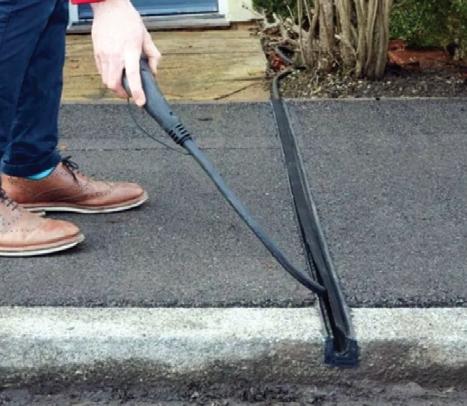
Milton Keynes will be the first city to receive public installations of the new product.
Cllr Jennifer Wilson-Marklew, cabinet member for climate action and sustainability, said: “This is a really innovative and exciting trial which could encourage people to make the switch to electric. We’re constantly looking for ways to both improve charging facilities and to give people the confidence that they will be able to charge their cars.”
Engineering firm EV Civils has announced the launch of its new sister company, EZ Block.
The new company produces a concrete block that aims to speedup electric vehicle chargepoint installations while maintaining a sustainable solution for the long term.

The blocks are designed to provide a secure foundation for charging stations and a uniform finish on a
site regardless of the installer.
EZ Block director Craig Hibbert said: “As electric vehicles become more common, it’s important to ensure that the processes of installing charging stations also remain as sustainable as possible.
“Our new base provides a simple, yet effective solution that allows for quick installs no matter the weather with one of our key aims to facilitate same day installs.”
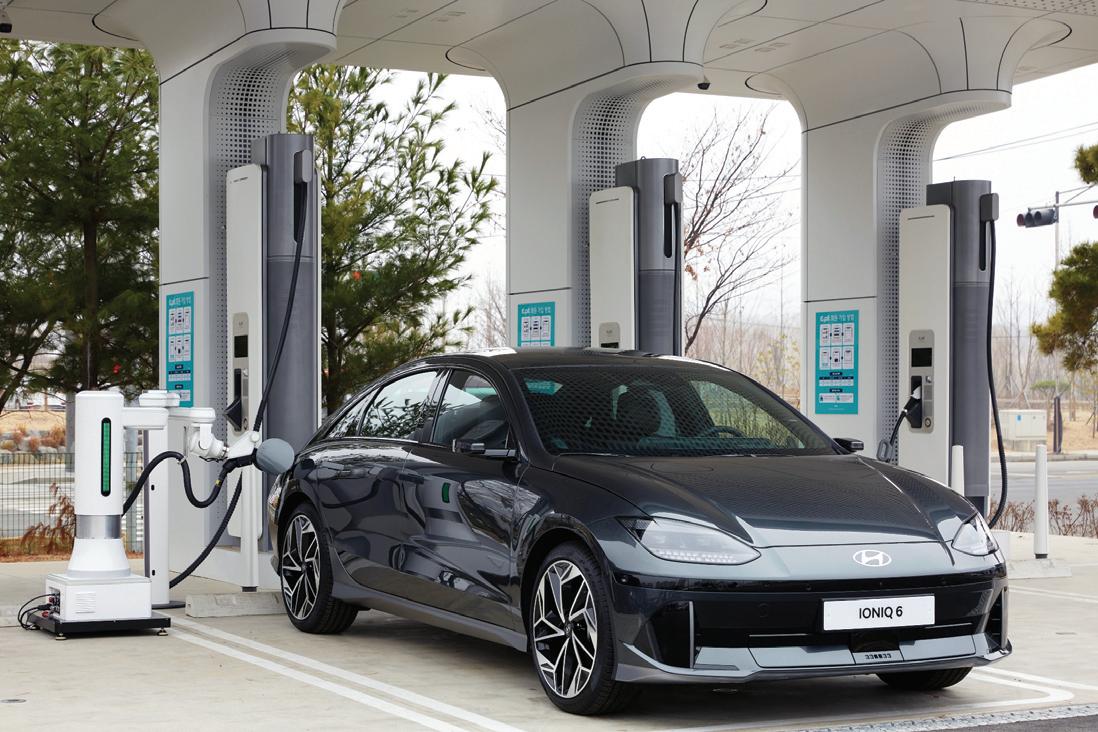
AI driven robot will help people with mobility needsHyundai’s ACR charging an Ioniq 6 The Kerbo Charge cable gulley EZ Block
YOUR GUIDE TO CONSTRUCTION, CONSULTANCY, PARKING SYSTEMS, TECHNOLOGY AND RECRUITMENT SERVICES
The Leading Independent Consultancy for all your parking solu琀ons
Established in 1991, with over 230 sa琀s昀ed customers comprising both public and private sector (including Local Authority and Health and Educa琀on establishments). Quality parking solu琀ons provided by our experienced in house specialists:
GIS mapping and surveying
• MTO site surveys and digi琀sing.
• On street TRO signs and lines: legality and condi琀on surveys (sample surveys also available).
• GIS mapping of TRO surveys, produc琀on of digital maps and TRO management for Order wri琀ng, upda琀ng and consolida琀on.
• Data extrac琀on and conversion of text based schedules to digi琀sed map based solu琀ons.
• Length of stay, usage, and occupancy parking surveys, both on and o昀 street.
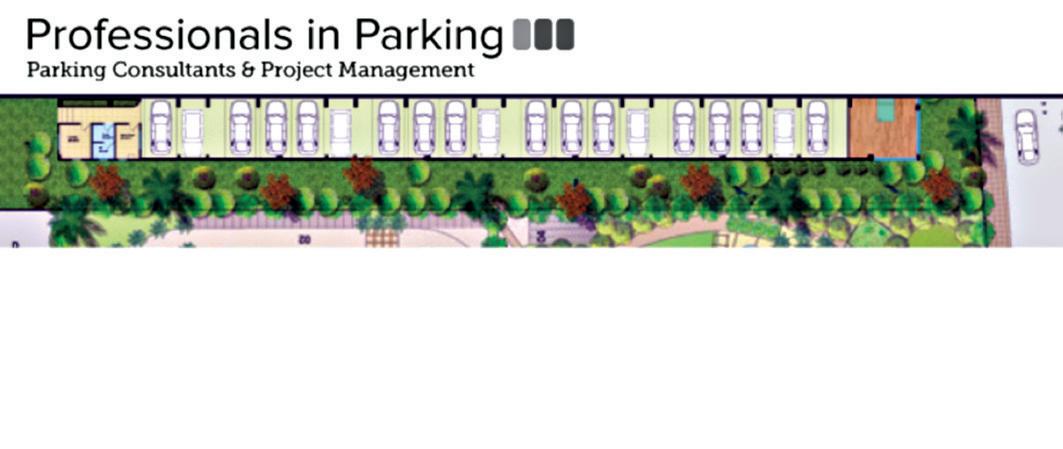
• Compliance surveys and data analysis.
• Surveying and mapping of infrastructure assets.
Contact:
Consultancy services
• Financial appraisal and e�ciency reviews of parking service provision.



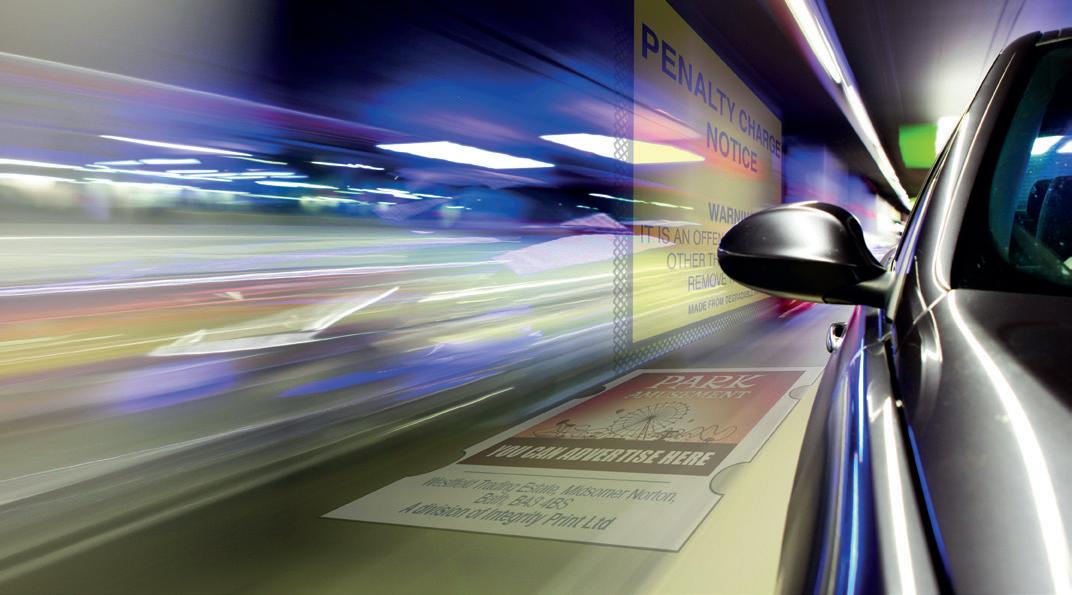
• Collabora琀ve working – joint no琀ce processing and shared enforcement.
• On and O昀 street tra�c regula琀on order wri琀ng.
• DPE and CPE feasibility studies and implementa琀on.
• Tari昀 reviews.
• DPE/CPE services speci昀ca琀on wri琀ng and tender evalua琀on.

Peter Lowe B.Eng., C.Eng., M.I.C.E., FBPA
Tel: 01492585055 or 07900264137
Email: plowe@rtaassociates.co.uk
RTA Associates Ltd www.rtaassociates.co.uk
ENFORCEMENT & DEBT RECOVERY SERVICES
For more information on our services, please contact:
Lauren Appleby (North) lappleby@newlynplc.co.uk 07931 811088
Shaun Byrne (South) sbyrne@newlynplc.co.uk 07964 764099

DOCUMENT AND STATIONERY SERVICES
www.parkingandsecuredocuments.com
PSD - incorporating The Parking Shop –is the market leader for parking related statutory document mailings and sustainable manual enforcement stationery.
We also supply line marking and signage solutions and as part of our service we offer on site surveys and reports.























